





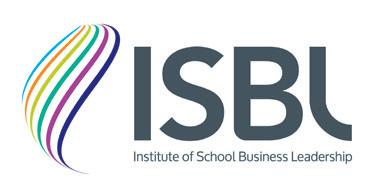














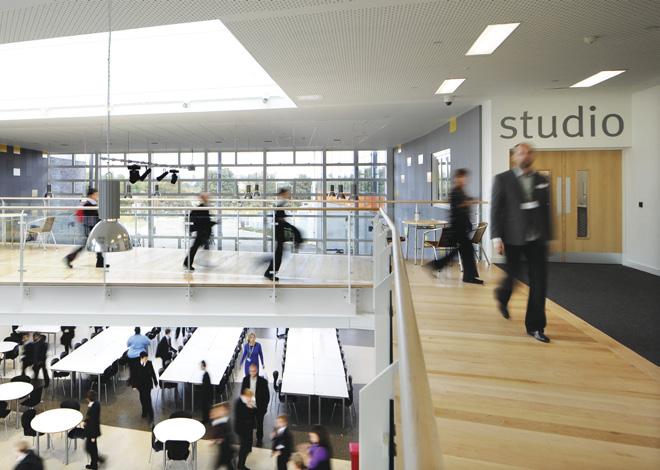













































DfE-accredited live online alternative provision for Key Stages 2–4, designed to support internal AP within schools. Flexible, trauma-informed lessons help learners rebuild confidence and re-engage, whether on-site or online. Real-time progress tracking and personalised support drive meaningful, effective reintegration.

Find out how we can support you and your students. Scan the QR code to read our prospectus or contact us via our website or phone.

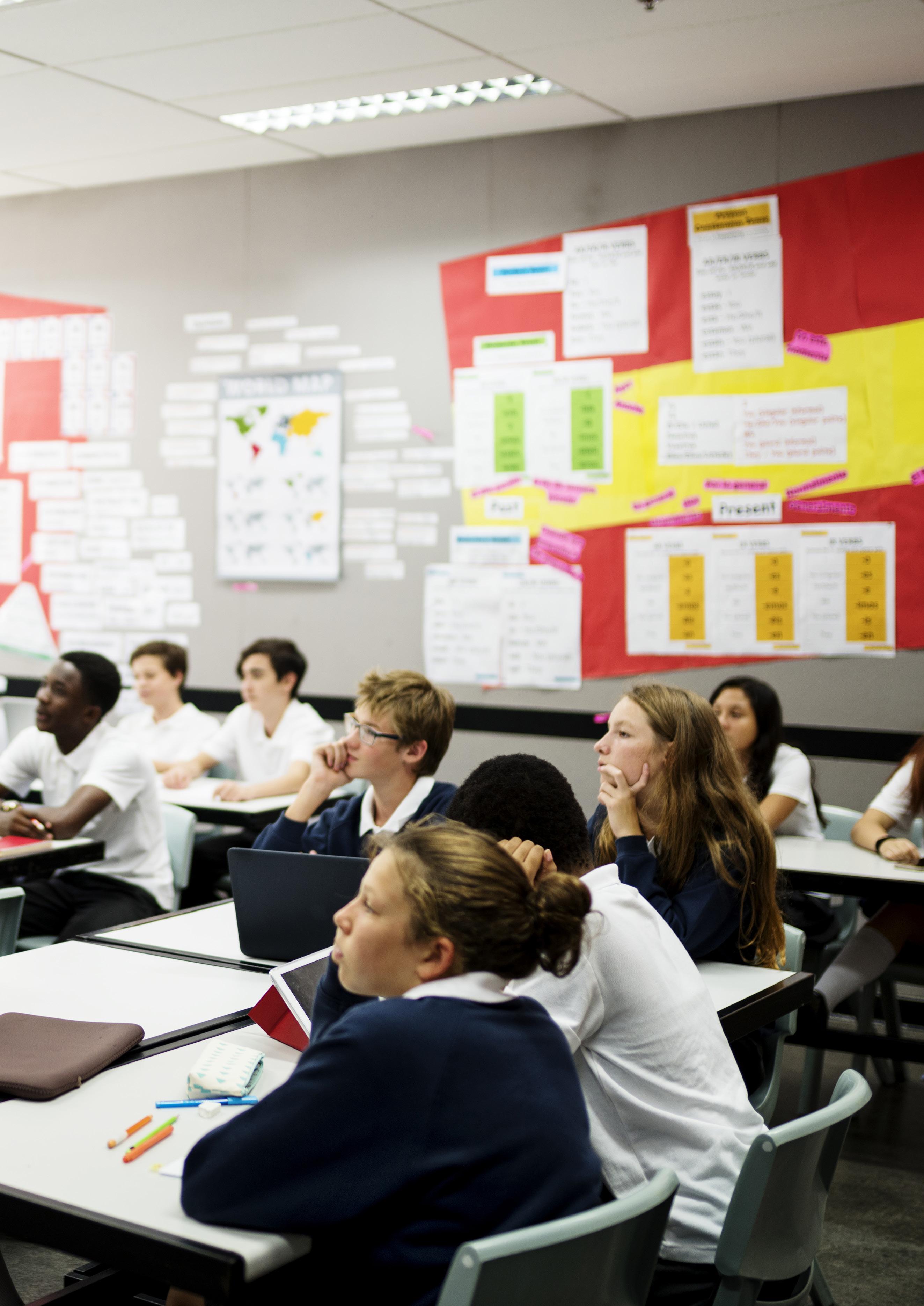
Schools will be issued with AI-powered minimum attendance improvement targets from this month, the Department for Education has announced.
The attendance baseline improvement expectation (ABIE) will be based on schools’ circumstances – including location, pupil needs and deprivation.
The department is also using AI and data to give more support to schools to meet the minimum expectations, by linking them up with high performing schools with similar circumstances. These top schools will be identified within each school’s ABIE report.
Last year saw the biggest improvement in overall attendance in a decade, with the government overseeing 5.3 million more days in school and 140,000 fewer persistently absent pupils as part of its Plan for Change. However, one in three schools are failing to improve.
Education Secretary, Bridget Phillipson, said: “We can only deliver opportunity for children in our country if they’re in school, achieving and thriving. That’s why I want every school to play its part in getting attendance back to –and beyond – pre-pandemic levels.”
Research also identifies a significant attendance drop-off during Key Stage 3 as pupils struggle to settle in to secondary school life and emerging issues start to surface...


Research has revealed the full extent of how pupils from higher-income families are favoured by high-performing secondary school admissions criteria, and suggests ways to make the admissions system more equitable.
The report, led by the University of Bristol and funded by the Nuffield Foundation, showed pupils from more affluent households are 43 per cent more likely to be enrolled in a highly effective school than lower-income household pupils. Interim findings of the research project showed that the vast majority (88 per cent) of secondary schools used geographical location – including catchment areas and distance or travel time from home to school – to decide which pupils are admitted.
The report, which analysed more than 550,000 pupils and some 3,250 schools in 152 local authorities across England, looked at the schools within a commutable range of pupils’ homes and calculated the average effectiveness of those schools for each pupil. School effectiveness, also known as Progress 8, is measured as the average progress pupils make from the end of primary school to their GCSEs.
Findings revealed that less than one in five (around 18 per cent) of pupils eligible for Free School Meals (FSM) were enrolled at a highly effective school, defined as a school in the top quartile of effectiveness, compared to around 25 per cent of pupils not eligible for FSM.
To help make the school admissions more socially equitable, the researchers predicted the effect of three possible reforms to admissions criteria: prioritising FSM-eligible pupils up to a specified quota; a quota of places decided by a ballot; and testing pupils and allocating each school a balance of pupils with different levels of academic ability...

I N C R E A S E
S C H O O L S A F E T Y
R E L I A B L E
E A S Y T O U S E
E F F I C I E N T
S A F E T Y A L A R M
S Y S T E M S
V
l
s y s t e m s t o e d u c a t i o n s e t t i n g s .


The government is introducing new Regional Improvement Teams to help underperforming colleges to turn things around.
The new Regional Improvement Teams will analyse colleges’ performance in delivering on the priorities of a local area, including the skills local people need and improving outcomes for young people with special educational needs and disabilities (SEND).
All colleges will get access to best practice guidance and performance data and those with identified problems will get targeted support, including peer mentoring.
Made up of sector and industry experts, teams will offer support and advice for improving individual college performance, building stronger collaboration between colleges and universities in responding to local skills needs.
The teams will be rolled out nationally by the next academic year to break down barriers to opportunity for around 70,000 young people – with plans to reach underperforming colleges across the country.
The government has also announced it will invest nearly £800m extra into funding for 16–19-year-olds next year (2026-7).
Coming from the existing Spending Review settlement, this funding will support an additional 20,000 students.
Education Secretary Bridget Phillipson said: “By providing targeted support where it’s needed most, we’re delivering on our commitment to break down barriers to opportunity and give young people the best possible start in their careers.”...

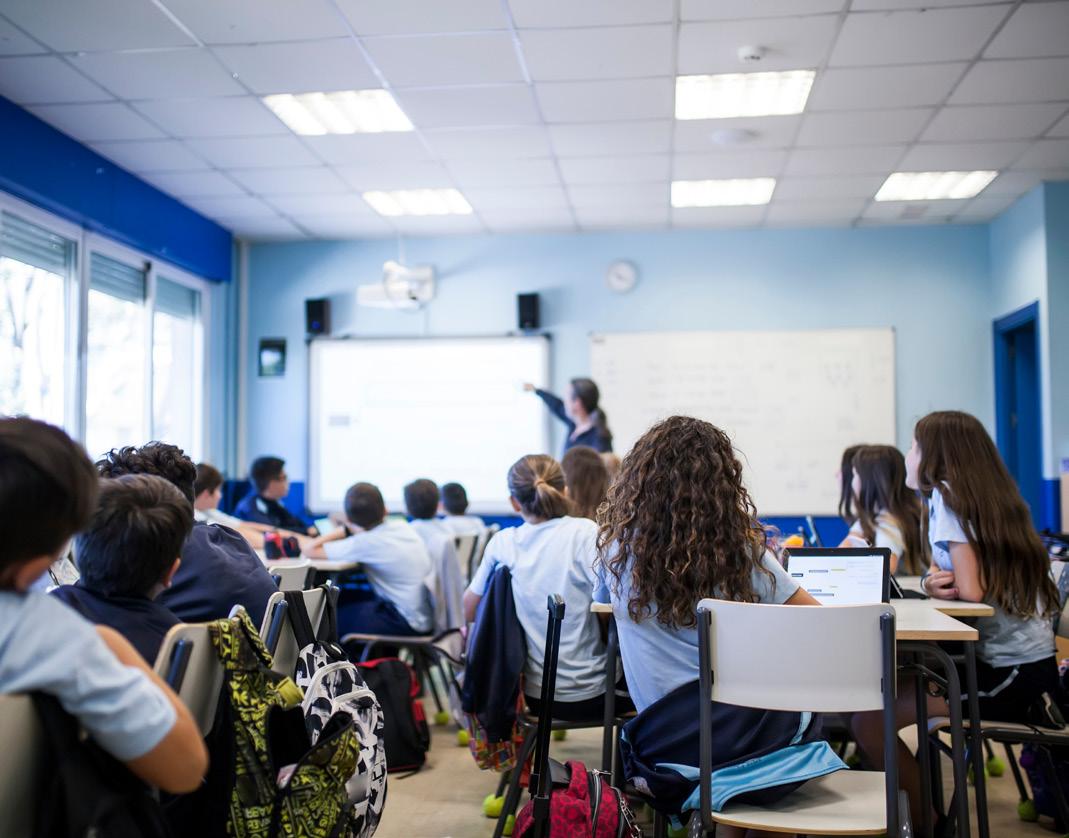
Ofsted
Ofsted has shared findings from pilot inspections carried out in 115 schools this autumn, ahead of the full rollout of its renewed inspection framework.
In a blog by Lee Owston, Ofsted’s national director for education, he wrote: “Overall, feedback on the renewed framework has continued to be really encouraging. Many providers described the toolkit and methodology as a positive step forward, appreciating the clarity they bring to the inspection process and the opportunity to see how inspectors are applying the renewed approach.”
However, some concerns were raised about increased workload and pressure on staff, particularly in smaller or more complex schools, as well as about how pupil achievement is assessed.
In response, Ofsted has made several changes to the framework. A small but significant wording change has been made to the achievement standard, adding the word “typically” to better reflect variations in school data, such as when pupil numbers are small or when no published data is available.
The updated standard now reads: “On the whole, pupils achieve well. Typically, this will be reflected in their attainment and progress in national tests and examinations, which are broadly in line with national averages, including for disadvantaged pupils.”...
Titan floor-to-ceiling toilet, shower and changing cubicles prioritise privacy, durability and style.
Titan cubicles boast strength and functionality in equal measure with a robust full height design that’s perfect for high traffic areas situated in both wet and dry areas. Featuring floor-toceiling pilasters set into a unique aluminium shoe, extra rigidity is guaranteed while minimal floor and ceiling clearances provide ultimate privacy for users. Available in 34 on trend panel finishes, Titan is fully customisable to suit your project requirements.

Discover the Titan cubicle range. 01474 353333
www.venesta.co.uk marketing@venesta.co.uk




Nearly eight in ten UK teachers (79 per cent ) have had to rethink how they set assignments because of Artificial Intelligence (AI), according to a new British Council survey.
The findings show that 38 per cent of teachers now design tasks specifically to prevent AI use, while almost six in ten (59 per cent) are finding ways to integrate AI tools constructively into their lessons.
The survey questioned 1,000 UK secondary school teachers on how the rise of artificial intelligence and digital culture is reshaping classroom practice.
Despite teachers adapting their approach to setting assignments, they also remain split on whether artificial intelligence is helping or hindering student learning.
Six in ten expressed concerns about the impact of AI on students’ communication skills, yet similar proportions reported positive outcomes, including improved listening and pronunciation, suggesting potential benefits to speech and confidence.
However, one in four (26 per cent) teachers have noticed a decline in writing quality and comprehension, and a similar number report students using a narrower vocabulary.
Digital culture is also transforming language in the classroom: 85 per cent of teachers now find themselves looking up slang or online expressions such as “rizz”, “delulu” and “six, seven”...


A growing number of UK children are now eligible for Free School Meals (FSM), yet most are not taking advantage of them on a daily basis, new research reveals.
The 2025 School Meals Report by the ParentPay Group in partnership with LACA –The School Food People, shows that 71 per cent of FSM-entitled pupils are not accessing their free meals every school day.
Based on responses from over 236,000 parents, the report highlights a growing disparity between eligibility and usage. FSM entitlement rose sharply from 23 per cent in 2024 to 37 per cent in 2025, driven by costof-living pressures, demographic shifts, and improved identification processes.
Despite this, the data reveals that only 29 per cent of eligible children are using FSMs four to five times per week. Around one in 10 entitled children are not registered at all – often due to stigma, confusion, or language barriers.
What’s more, whilst 55 per cent of UK schools offer breakfast provision, a third (33 per cent) of parents said their child doesn’t attend, even when the service is available.
The case for school meals is clear. According to a further survey by ParentPay Group, 86 per cent of school leaders believe nutritious school meals are not just a welfare issue, but a lever for improving rankings and long-term outcomes. In addition, nearly two-thirds (61 per cent) say that pupils eating nutritious school meals are more ready to learn...
Tatum, Brick Club learner, aged 8
We’re Play Included, the world’s leading LEGO® therapy experts. We train educators to deliver Brick Clubs – specialist workshops that unlock every child’s growth through play. Our programme is backed by the LEGO Foundation and delivers proven social and emotional outcomes. The modules are fun, easy to follow and equip teachers, TAs and
SENCOs with the tools to build children’s confidence, communication skills and their sense of belonging.
With bespoke packages and group discounts to fit your budget, isn’t it time your school got an OMG review?
Let’s connect! Click to arrange a call to learn about our packages

Education Secretary Bridget Phillipson has set a 2029 timeline for the removal of Reinforced Autoclaved Aerated Concrete (RAAC) from all schools and colleges.
So far, the government has confirmed that RAAC has been removed from 62 schools and colleges. For schools with RAAC being rebuilt through the School Rebuilding Programme (SRP), all will be in delivery by the end of the current parliament, with more than half underway at present.
Of the 22,000 schools and colleges in England, 237 had confirmed RAAC, all of which are providing full time face-to-face education for all pupils. 123 schools with RAAC will be rebuilt through the School Rebuilding Programme and 108 schools and colleges are getting government grants for RAAC removal, with works delivered through their responsible body – usually the local authority or Trust. Six schools and colleges have alternative arrangements, including buildings not being part of their estate in the longer term.
Bridget Phillipson said: “After years of neglect we are giving every child a safe and high-quality classroom where they can focus on learning - by setting clear timelines for the permanent removal of RAAC from schools and colleges. It’s what parents expect, it’s what children deserve and it’s what we are delivering.”

Free fruit and veg scheme improving pupil behaviour: READ MORE
Funding to support pupils in Scotland impacted by poverty: READ MORE
Enrichment activities to be assessed during inspections: READ MORE
School transport comes under the financial spotlight: READ MORE
SEND system in deep trouble, warns CotN: READ MORE
Household brands back free breakfast scheme: READ MORE
The government has updated its guidance on school uniforms, calling for them to start limiting branded uniform and PE Kit items ahead of the cap coming into force in the Children’s Wellbeing & Schools Bill.
The guidance says that affordability should never be a barrier for parents, and that schools should engage with parents and pupils when they are developing their uniform policy. They need to think about the total cost of uniforms, taking into account all the items that parents will need to provide while their child is at the school.
The guidance says that from September 2026, schools should limit the number of compulsory branded items of uniform and PE kit to three or fewer. Secondary and middle schools should limit the number of compulsory branded items of uniform and PE kit to four or fewer, if one is a tie.
The government is currently pursuing legislation to make this limit mandatory. A recent Parentkind poll revealed that more than a quarter of parents will go without heating or eating to cover uniform costs.
No space, no free room?
We’ve got it covered!


The Sensory Pod is an affordable, calming and relaxing space for both Children & Adults. Typically used in special needs and mainstream schools, Universities, Hospitals, Libraries and airports, as well as family homes.
PREVENTS AND MANAGES DISRUPTION
Helps prevent and manage the disruption caused by sensory overload events, through pre-emptive usage when stress/anxiety is bubbling.
MORE RELAXED ENVIRONMENT
Principals, teachers, and students all positively report on the benefits of having a calming focal point for those in need of withdrawing.
BENEFITS THE WHOLE COMMUNITY
Non autistic students with stress, anxiety and the potential for panic attacks also greatly benefit from the Sensory Pod.
IMPROVES ATTENDANCE AND PARTICIPATION
Parents/schools report improved attendance and students are less likely to self-absent as coping skills increase with the Pod.
EDUCATIONAL RESOURCE
It’s possible for teachers to use the 32” monitor to mirror educational software from their phone or computer.
ENCOURAGES INDEPENDENCE
It encourages personal sensory regulation and independence. Students absent themselves from class when they feel the need.





The government has unveiled sweeping reforms to the national curriculum, following Professor Becky Francis’s review. From teaching primary children to spot fake news to making triple science GCSE the norm, we explore the proposed changes
The government has set out plans to reform the curriculum, following recommendations from Professor Becky Francis’s Curriculum and Assessment Review
For the first time, citizenship studies will be compulsory in primary schools, ensuring all pupils learn media and financial literacy, law and rights, democracy, and climate education early on. This will enable primary aged children to gain vital skills like how to spot fake news and identify misinformation and disinformation, helping them develop the critical thinking needed to challenge what they see and protect them from online harms. Primary pupils will also learn
more about the fundamentals of money, recognising that children are now consumers often before they reach secondary school.
The government will introduce a new statutory reading test in year 8 and strengthen writing assessment in year 6 to spot pupils who need extra support at a crucial point in their development.
Under the new arrangements, arts GCSEs will be given equal status to humanities and languages, recognising their value in boosting confidence and broadening skills for a competitive job market.
To complement this, a new core enrichment entitlement will offer all pupils access to civic E
The competition:
Do you have any ‘Tales from the Snow’? Don’t be shy, give it a go!
Tell us a story glistening with cheer. A cherished holiday memory you hold so dear.
Or maybe a story about some icy fun. Snowball fights once school is done.
Whatever your poem, we want to hear it. And put everyone in the festive spirit.
Used in over 1,600 schools - the adaptive online programme develops students’ fluency, vocabulary and comprehension.


Win a year’s subscription to Reading Plus for your class. Top prize*
*T&C’s apply.
F engagement, arts and culture, nature and adventure, sport, and life skills to build resilience and opportunity.
Schools will also be expected to work towards offering triple science GCSE as standard, which comes alongside the government exploring a new qualification for 16-18 year olds in data science and AI.
The government will also publish a new oracy framework to ensure more young people become confident and effective speakers, building on the success of the reading and writing frameworks, and help teachers strengthen their teaching of oracy.
Education Secretary, Bridget Phillipson, said: “From the fundamentals of reading to the present danger of spotting fake news, as part of our Plan for Change, these landmark reforms will help young people step boldly into the future, with the knowledge to achieve and the skills to thrive as the world around us continues to rapidly evolve.”
For the first time, the new national curriculum will be digital and machine-readable, to support teachers to more easily sequence their school curricula.
The new curriculum will be implemented in full, for first teaching from September 2028. Government will aim to publish the final revised
For the first time, citizenship studies will be compulsory in primary schools, ensuring all pupils learn media and financial literacy, law and rights, democracy, and climate education early on
national curriculum by spring 2027 – giving schools four terms to prepare for the changes.
Sir Hamid Patel CBE, chief executive of Star Academies, said: “The government’s response to the Curriculum and Assessment Review shows principled determination to build on the very best practice that has been developed by schools. It spurs ambition and innovation while recognising the increasingly complex challenges faced by the sector.
“The demands that reform places on teachers have been acknowledged, with a sensible implementation timeline and signposting of reputable sources of support.”
The government confirmed changes to school performance measures – the removal of the EBacc and reforms to Progress 8. It will develop and consult on an improved version of Progress 8 and Attainment 8, as it “believes the current structure has hampered progress in subjects E











F which strengthen our economy and society including the arts. Changes will therefore recognise the value of these subjects and the importance of a broad pre-16 curriculum.
The proposal for the improved Progress 8 and Attainment 8 model will retain the current rules on English and maths but will have two dedicated slots for science subjects and four “breadth slots”.
The move was not included in Professor Becky Francis’s review, which recommended that the subject make-up of Progress 8 be left as it is.
The government has set out a new core enrichment entitlement, so that every child –wherever they go to school – has access to sport, the arts and more.
This follows evidence which shows that increased participation in extra-curricular activities is associated with higher academic outcomes.
The government will publish a new set of enrichment benchmarks, with schools asked to ensure every child has access to activities across five categories of enrichment.
Ofsted will consider as part of routine inspection how this expectation is being met, with information also made available to parents through a new information service called school profiles.
Ruth Marvel OBE, chief executive, The Duke of Edinburgh’s Award, said: “We are delighted that the government has pledged to create a new enrichment entitlement. This is a watershed moment that will ensure every pupil, no matter their background, can experience an enriched education and have equitable access to the activities and experiences that engage, inspire and develop, as a complement to the academic curriculum.”


Discover how ASSET Education has Transformed Teaching & Learning with Gemini
Teachers often spend hours creating multiple versions of lessons to meet diverse needs – a task that’s exhausting and increasingly ineffective. Gemini for Education is helping schools escape this challenge
It’s 11:47pm on a Monday. Sarah, a Year 5 teacher in Manchester, is still at her kitchen table. In front of her are three versions of a Roman Empire worksheet, a vocabulary sheet and a hand-drawn timeline. Four hours of work. One lesson. Tomorrow, she’ll do it all again for maths.
Sarah’s story is not an exception; it is the nightly reality for thousands of dedicated educators trapped by a systemic design flaw.
The differentiation trap Teachers’ Standard 5 demands educators “adapt teaching to respond to the strengths and needs of all pupils.” It’s a noble aspiration, that in reality, is difficult to execute when every teacher is working at maximum effort already. With full-time teachers already working 52.4 hours per week and losing two hours daily to administrative tasks, this mandate has become unsustainable.
Layering this difficulty, the typical response of manually crafting ‘Bronze, Silver and Gold’ worksheets for predetermined ability groups has been explicitly criticised by Ofsted for increasing workload while delivering minimal impact. And worse: research shows this rigid grouping actively widens achievement gaps.
An inclusive breakthrough for SEND Gemini for Education fundamentally reimagines differentiation. Sarah creates one excellent core text, then adapts in real-time as needs emerge.
Teachers can quickly adapt materials to meet diverse student needs. For a student struggling with comprehension, simply request, “Re-level this text for reading age 7” and receive the adapted content in seconds. To support a pupil with autism, ask for “five sequential instructions and a visual timeline.”
For an EAL learner, ask Gemini to “Translate into Polish and create an audio overview.”
For SEND support, the transformation is profound. With 69 per cent of teachers believing the system fails SEND pupils and 83 per cent of schools unable to recruit support staff, Gemini can execute the task, but the teacher provides the professional judgment, placing pedagogy, not technology, at the heart of the classroom.
The leadership imperative 84 per cent of teachers who left last year cited workload. 41 per cent of current teachers plan to leave within five years. These aren’t statistics, but stories like Sarah’s. They’re the brilliant faculty you can lose because Sunday night planning has become unsustainable.
Ofsted’s position presents a clear opportunity for forward-thinking leaders. The inspectorate is not focused on the tool itself, but on its impact. This creates an imperative for schools to lead with a robust strategy that can rigorously evidence how AI reduces workload, deepens differentiation and improves outcomes, all while upholding the highest standards of safeguarding and data protection.
For Sarah and the thousands of teachers like her, the question isn’t whether to embrace AI – it’s whether we can afford not to. The technology exists to transform Sunday night stress into Monday morning confidence. It’s time to make that shift a reality. M




With a large portion of the school estate in poor condition, the Department for Education’s upcoming Construction Framework 25 could mark a turning point for the design and quality of school buildings.
Architect Rachel Moulton hopes the framework mandates greater inclusivity, sustainability and wellbeing for every new project
Our state school estate in England is in poor condition and in need of significant investment, impacting on the physical safety of users, and compromising the teaching and learning experience. This year we see the introduction of a new design and construction framework from the Department for Education (DfE). Could this signal a change in design standards, and the creation of a new benchmark for inclusivity in the education sector?
According to 2023 data from the National Audit Office, many schools are dealing with outdated facilities and poorly maintained infrastructure, with insufficient funding to modernise or carry out necessary repairs.
The same report highlights that more than 700,000 pupils are being taught in schools that the DfE or responsible bodies consider in need of major refurbishment or rebuilding. This is an ongoing issue today, and one that is adding to the mounting pressures on school leaders. Students and teachers deserve better from their educational environments.
The education design and construction sector which serves the state sector is currently in a transition period where we await the new Construction Framework 25 (CF25) from the DfE, replacing the soon to expire Construction E
F Framework 21. The new framework is set to be in place for a minimum of six years, bringing with it new and updated value banding. As part of the new framework, the DfE is also due to issue a new specification for its projects.
As specialist education architects we have many hopes for the new specification for facilitating greater design quality. The previous Spec21 brought great new sustainability deliverables, with all new schools requiring to be Net Zero Carbon in Operation (NZCiO). We expect this to continue in the new specification, alongside more elements of inclusive design and biophilia, both of which bring measurable improvements to educational attainment and wellbeing.
The new CF25 framework will provide the DfE with the procurement route for the majority of large capital works for education facilities across England. It will mostly service the School Rebuilding Programme, which carries out major rebuilding and refurbishment projects at schools and sixth-form colleges, with prioritisation according to condition. There are also two other funds accessible to schools: the Condition Improvement Fund
(CIF), an annual bidding fund for small trusts, standalone academies, voluntary aided schools and sixth-form colleges to support essential maintenance projects and issues which could lead to imminent school closure; and the School Condition Allocations (SCA), an annual funding given to larger bodies, such as multi-academy trusts and local authorities, to invest in condition priorities across their school estates.
The new CF25 framework should provide great opportunities for schools due for construction work to improve their learning spaces, but it should also raise the bar, setting a new standard for the future of school buildings, and driving educational learning environments and school campuses forward over the coming decades – sending out a clear message that in the 21st century we need to provide schools that build belonging, and are accessible to all. Incorporating inclusive design can take many forms, from ensuring spaces are physically accessible, to ensuring that they support neurodiversity. It can also bring many benefits

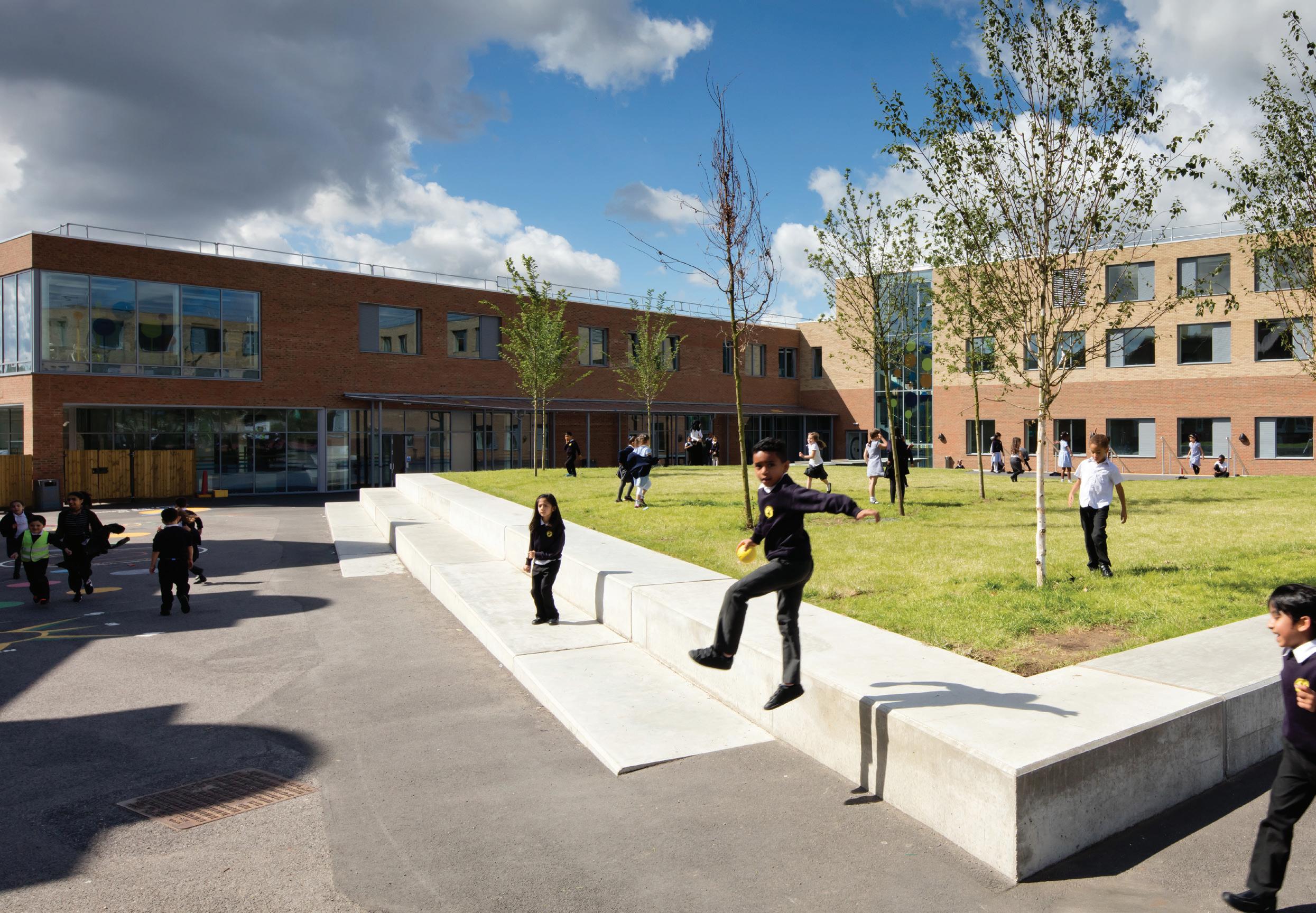
to the operation of a school, including increased learning attainment and improved behavioural outcomes, often with small design changes making a large impact on the school experience. Inclusive design requires the buy-in of all design and construction disciplines throughout the tender process. With construction frameworks, this tender process involves multiple stages. These include the full assessment of school sites, looking at building condition and suitability and inclusive design and learner needs, and engagement with local authority planning officers, the local and school community, and the expertise that lies within the DfE. To optimise outcomes for the school and its community, each stage, from survey, to feasibility study, control option, and contractor team appointment, requires a detailed and considered approach.
At HKS we engage in this process alongside professional colleagues from a variety of disciplines, speaking with the students, staff, and the wider school community to help us to gain an understanding of how the school operates, and how each group uses different learning environments and facilities.


This year we see the introduction of a new design and construction framework from the Department for Education. Could this signal a change in design standards, and the creation of a new benchmark for inclusivity in the education sector?
The good news is that inclusive design can already be seamlessly incorporated into school construction projects. Some of the key considerations that can make a difference to the user experience include creating access to – or a view out to – nature, to improve mental wellbeing, increase creative thinking, and assist with student respite. Similarly, bringing natural materials and finishes into learning environments is proven to increase positivity, productivity, and performance. Entrance and circulation areas are also important. Corridors can be intimidating and over sensory spaces in schools, especially during class changeovers. Introducing wider dimensions can increase personal space and reduce overwhelm, aiding the smooth running of the school day, and proving out-of-classroom behaviour, especially in secondary settings. E
F Increasing daylight is another way to reduce stress levels, as well as helping to increase physical activity and increase sleep quality and duration out of school, creating a direct impact on learning attainment. Increased daylighting can be supported by well-designed artificial lighting, with the correct levels to assist with concentration and wellbeing. The elimination of flickering lights is another key factor in reducing stress and sensory overload.
Acoustics are also vital to an inclusive environment, with improved speech intelligibility and perception aiding concentration and improving reading development. Sensory control can also bring benefits, allowing teachers to set the room to suit their student cohort. Sensory control can range from individual room controls, to incorporating different areas and environments in a classroom. This might include the provision of a calm space for learners to concentrate or re-regulate, and space for exertion, ideally via direct access to an outdoor space. It should come as a relief to school leaders that there are many changes that can be implemented by a school with no planned construction works, which will also help to bring schools in line with this renewed focus on inclusivity and wellbeing. Introducing plants to classrooms for example is a quick and simple way of bringing a calm feel to the classroom and improving air quality. Selecting wall colours that are calm and do not divert attention can also assist pupils with concentration, along with the reduction of in-classroom stimuli – relocating bolder ‘work-proud’ displays to the back of
classrooms, or bringing these into communal spaces, for the wider school community.
Overall, for schools to be fit for teaching in 2026 and beyond, our education estate needs to evolve with changing pupil needs, and new frameworks should always be firmly rooted in the very latest research and evidence into young people’s mental health and wellbeing, and regenerative principles. These should consider both the requirements of the digital generation, and the changes in pedagogy that new technology brings with it. We hope that CF25 and the new government specification provide a good example of these principles to help shape our future schools for the better, creating accessible environments where everyone can achieve their best. L
Rachel Moulton is regional practice director for education and life science at HKS.
FURTHER INFORMATION
www.hksinc.com

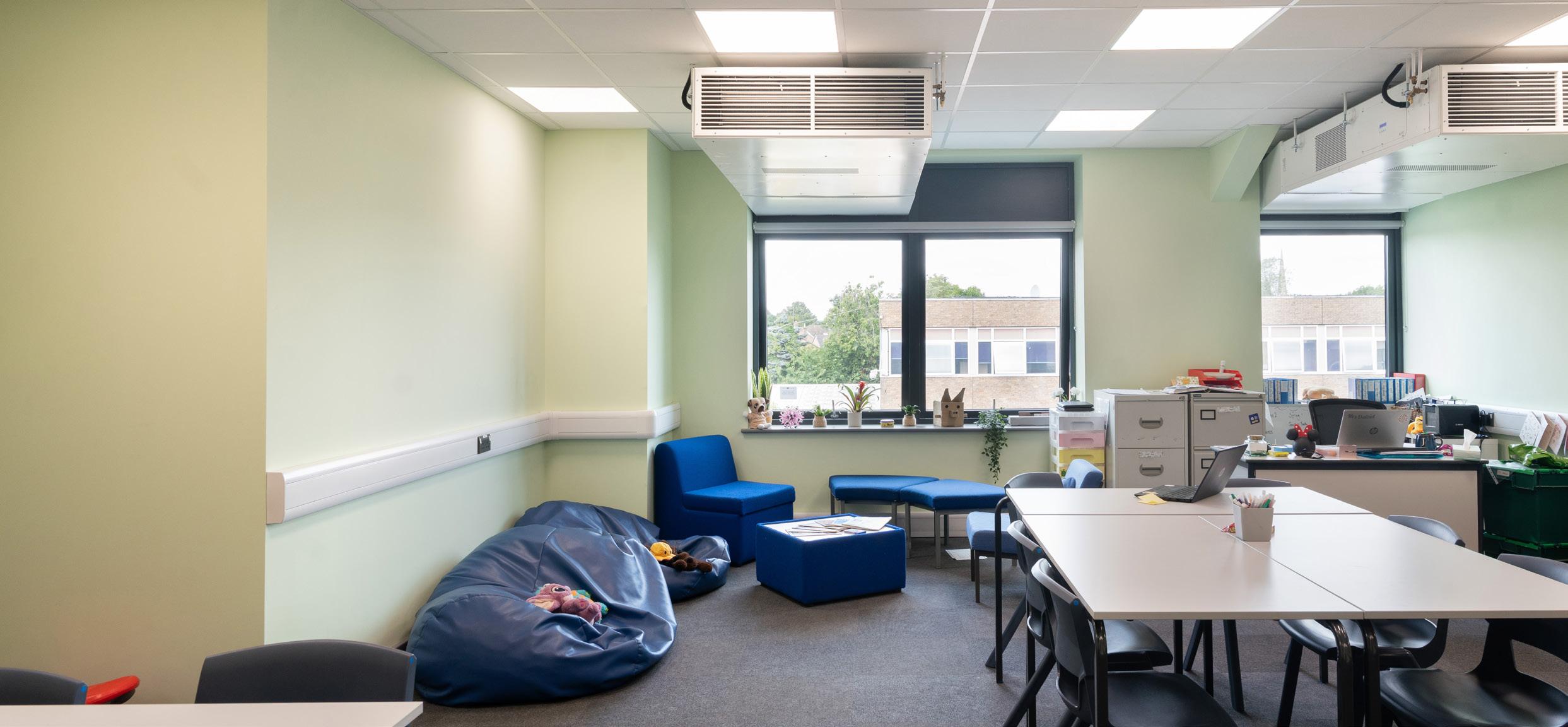
Vaping has become a growing concern in schools. What began as a supposed alternative to smoking has evolved into a serious issue affecting health, focus, and safety. That’s where Volan’s vape sensor steps in – an intelligent safeguard designed for educational settings
Volan’s system constantly monitors air quality, using advanced sensors and AI to detect vaping with impressive accuracy. When a potential incident is identified, staff are instantly alerted, allowing a quick and discreet response. The compact, modular units can be fitted in bathrooms, corridors, or social areas without disruption. Importantly, the Volan sensor does more than detect vaping – it prevents it. When students know vaping will be identified, they’re less likely to leave lessons for a “quick vape,” helping reduce unnecessary
classroom breaks and maintain focus. With some vapes found to contain illegal substances or drugs, this technology plays a vital role in safeguarding student health. By reducing hidden vaping areas, Volan also helps deter bullying and ensures every corner of school remains safe. In protecting wellbeing, learning time, and community trust, the Volan vape sensor is a small device making a big difference. M

Modern construction of a 44,000-square-foot warehouse facility at Gateway 14 strengthens national distribution and sustainability efforts

Bauder Limited, a leading manufacturer of flat roofing systems, celebrated the official opening of its new UK distribution centre in Stowmarket, near Ipswich. The event took place on Tuesday, 7th October.
The facility is located within Gateway 14, East Anglia’s largest business, innovation, and logistics park. It increases Bauder’s presence in Suffolk while supporting the company’s significant growth across the UK. In addition to its UK operational headquarters in Ipswich, this new site becomes Bauder’s largest distribution hub in the country.
Bauder invited all head office staff to join the warehouse team in celebrating the distribution centre’s opening, alongside UK managing directors Yvonne Higgins and John Llewellyn. Guests enjoyed a ‘street feast’ and tour of the facility before the official unveiling ceremony. The event prioritised sustainability by transporting guests on dedicated shuttle buses, providing reusable cups, and ensuring all clean waste was recycled after a staff-led litter collection at the site and surrounding area. These efforts represent the facility itself, which boasts sustainable features including an EPC A rating, EV charging points, LED lighting, solar PV, smart energy systems, rainwater harvesting, wide wildflower borders at ground level, and nesting boxes for swifts. The wider Gateway 14 site also includes integrated walking and cycling routes, public transport connections, and biodiverse landscaping, helping to support local wildlife and promote a healthy work environment for staff.
reflection of Bauder’s
“The opening of our Gateway 14 distribution centre is a proud moment for us,” Jan Bauder, managing director at Paul Bauder GmbH, commented. “This state-of-the-art facility is a reflection of both our growth in the UK market and our confidence in meeting the increased demand for our products. That we have been able to achieve this in line with our sustainability programme, is just fantastic – not to mention the employment opportunities it has brought to the region.”
As Bauder continues to serve customers and partners nationwide, Gateway 14 is ideally situated within Freeport East with direct access to the UK’s motorway network via Junction 50 of the A14.
Bauder, a fourth-generation family-owned business, developed its first products in Germany in 1857. It is one of Europe’s leading manufacturers and suppliers of flat roofing solutions, including waterproofing, insulation, PV, and green and blue roofs. It is an Investors in People (IIP) Platinum award-holder for its commitment to high performance through good people management. M

Stacey Lucas, president of the Building Controls Industry Association (BCIA), reveals how building energy management systems hold the key to decarbonising the school estate while providing more productive, comfortable and sustainable learning environments
While the provision of the finest educators, equipment and curriculum is imperative for the education and development of the young people of today, the impact of the building environment can often be overlooked.
Indeed, with average global temperatures rising at an alarming rate, the way schools and educational facilities are designed has never mattered more. Even more so when you consider that extreme temperatures can have a substantial impact on a student’s cognitive function.
Put simply, designing an effective learning environment isn’t just about ensuring students and teachers are comfortable; it’s equally about the creation of spaces that support and bolster productivity and wellbeing.
Designing learning environments that utilise natural light and optimise air quality and acoustics – either in new premises or as part of significant retrofitting projects
– can enable much greater concentration and information retention in students.
High-quality air, natural light and welldesigned environments that are inspiring, engaging and tailored to students’ needs have been found to improve attention spans and encourage higher-order thinking skills.
While many students enjoy education and thrive at school, others find the learning process stressful, negatively impacting their mental health and wellbeing. Effective design and implementation of innovative technology that can improve air quality, ensure more natural light and increase comfort therefore has a crucial role in combatting this.
In fact, the design of aesthetically pleasing, calm and comfortable learning spaces contributes to a positive mindset, fostering emotional resilience and – as a result – reducing stress and anxiety. E

A complete solution for all your needs, trusted by thousands of schools and MATs.
We’ve been working in the education sector for decades. So our experts know how to save you money, and how to take care of your ongoing headaches – like chasing suppliers and checking bills.

Get started

One of the biggest challenges to education is poor concentration. While there can be many reasons why students aren’t retaining information or paying close attention to the teacher, learning environments that have poor air quality and ventilation are often the cause. In addition to more efficient ventilation and air conditioning systems helping improve concentration, it would also help to minimise other health issues, such as drowsiness or headaches. This is supported by research from the National Library of Medicine that revealed a significant association between headache incidence and prevalence and the occurrence of air pollution.
While enhancing air quality, lighting, heating and ventilation can significantly enhance student and teacher comfort, it also has the added benefit of improving the facility’s energy consumption. This is vital, given the Department for Business, Energy & Industrial Strategy suggests around 36 per cent of total building emissions from the UK public sector are attributed to schools and colleges.
This is where BEMS can play a crucial role here. Able to be seamlessly integrated into a building, either part of a retrofit project or in a new build, BEMS monitor, control and optimise how a building performs. Utilising a combination of software and hardware, BEMS helps facility managers control and manage heating, ventilation and air conditioning (HVAC), lighting and energy meters to create healthier and more comfortable environments while significantly reducing energy consumption.
Able to be seamlessly integrated into a building, either part of a retrofit project or in a new build, building energy management systems monitor, control and optimise how a building performs
Through the integration of air quality sensors with automated controls for air conditioning, heating and ventilation systems, BEMS enables facility managers to make real-time adjustments to ventilation and filtration rates. By monitoring and automatically adjusting ventilation based on CO2, humidity and pollutant levels, BEMS ensures healthy environments for pupils, teachers and other staff while reducing drowsiness and improving focus.
Providing facility managers with the crucial information needed to make informed decisions on appropriate temperatures, BEMS plays a vital role in improving student and teacher satisfaction and productivity. Allowing for area-specific and occupancybased temperature adjustments, this innovative system enables personalised comfort and utilises sensors to maintain consistent temperatures and comfort levels throughout.
Fully implemented into a building’s infrastructure, BEMS works closely with natural E














F light levels and sensors to automatically adjust lighting based around occupancy and usage.
Being able to closely monitor and control lighting in this way enables the full scheduling of lights for building use, optimising energy consumption and reducing wastage to help facility managers and property owners save vital money. Additionally, ensuring consistent and appropriate lighting levels can also enhance occupant comfort and improve safety throughout the building.
While BEMS are a highly effective tool in automating system operations, they also offer the added benefit of providing facility managers and building owners with the critical information required to shape energy consumption strategy moving forward. This data-driven decision making ensures those in charge of building management have complete control over every aspect of the facility’s energy performance, not only identifying and managing peak energy demands but also optimising the efficiency of each individual system.
Of course, having oversight of the systems and equipment in this way also ensures any inefficiencies or potential issues are spotted early and dealt with proactively.

As with any building, designing schools with both now and the future in mind is paramount. With educational organisations and facility managers keen to reduce operational costs and carbon footprints – while at the same time improving climate control to enhance occupant comfort – the early implementation of BEMS and other energy efficient systems and processes should therefore be a crucial aspect of new building design.
Not only will it mean the school, college or university is futureproofed, and able to meet ever-changing sustainability or building quality standards, it also ensures a comfortable, sustainable and energy efficient learning environment from the outset.
With BEMS a hugely effective way of cutting carbon emissions, reducing energy expenditure and futureproofing existing buildings across the UK, they have a vital role to play in the nation’s retrofit journey. Especially given estimates in 2023 suggested at least 24,000 school buildings required significant refurbishment or renewal.
The Minimum Energy Efficiency Standard (MEES) also exacerbates the vital need for schools and colleges to undertake significant retrofitting to meet the required Energy Performance Certificate (EPC) rating of ‘C’ by 2028 and ‘B’ by 2030.
Giving a holistic view of how a building’s systems and services are performing, such as heating and air conditioning, BEMS offers crucial insights into energy consumption that wouldn’t have been available previously.
Education is, and always will be, a critical part of a young person’s development, heightening the importance of providing them with the most appropriate curriculums, teachers and learning environments. Similarly, ensuring educational facilities are helping to drive the UK’s decarbonisation journey and creating a greener and brighter future through more optimised energy performance must not be overlooked.
BEMS offer the ideal opportunity to meet both these demands, substantially reducing energy consumption and carbon emissions while providing students and teachers with more productive, comfortable and healthy areas in which to learn and teach. M
Nick, managing director at TIB Services, shares insights from the company’s work supporting schools and multi-academy trusts with skilled site staff. Drawing on TIB’s experience in matching caretakers to school environments, he explores the current challenges in recruiting the right people for this vital role in schools
Firstly, how do school caretakers make a positive difference to the school community?
School caretakers play a vital role in creating safe, welcoming and well-maintained environments where learning can thrive. From managing site security to keeping classrooms in working order, their presence underpins every aspect of school life.
When caretakers are absent, even small issues – a broken chair, a faulty gate or a heating failure – can have a big impact on focus, attendance and wellbeing. A well-run site helps pupils feel settled and staff stay focused on teaching. Beyond their practical responsibilities, caretakers are also part of the school’s social fabric. They’re often the first person on site and the last to leave, becoming familiar, trusted figures who teachers rely on and students feel comfortable turning to.
What are the main challenges schools face when recruiting school caretakers, particularly in terms of availability, skills, or background checks?
The scope of caretaking has expanded in recent years to cover compliance, safeguarding and site management, but pay has largely stayed the same. This imbalance makes it challenging for schools to attract the right people.
Caretaking requires a combination of skills: practical know-how, communication, problemsolving, staying calm under pressure and the ability to work independently. Many of these skills are built over time through life experience rather than formal training.
Safeguarding is another essential consideration. Caretakers have regular access to pupils and school sites, so thorough background checks are mandatory. This includes enhanced DBS checks as well



as vetting under the KCSIE guidance. The process can take weeks, creating delays in recruitment and sometimes gaps in site cover.
The best candidates combine technical competence with a dedication to the school community and an understanding of safeguarding responsibilities. However, the perceived lack of progression and administrative hurdles can deter career-driven applicants, meaning schools need to rethink recruitment to secure the right people.
How can schools improve their caretaker recruitment strategies to ensure they get the best candidates?
Look beyond traditional job boards and education-sector experience. Many of the best caretakers come from different professional backgrounds – including the Armed Forces, emergency services, trades and engineering – where they’ve developed the discipline, resilience and problem-solving skills the role demands.
Schools should also tap into overlooked talent pools, particularly the over-50s. At TIB Services, we’re proud to be an AgeInclusive employer. In a recent survey, the majority of over-50s in our network said they choose to work beyond retirement for fulfilment rather than financial reasons. This mindset is incredibly valuable in schools.
Gender balance is another important area. Caretaking has traditionally been seen as a masculine role. By actively encouraging women to apply, schools can instantly double their candidate pool and introduce role models who show young girls that no career is off-limits.
Ultimately, recruitment should focus on values and transferable skills rather than past job titles. By broadening the search and appealing to people who want purpose in their work, schools can find dedicated, skilled caretakers who support the whole community.
What can be done to improve the perception and attractiveness of school caretaker roles to encourage more interest and applications?
For many mature candidates, the draw of caretaking isn’t financial, it’s personal. Schools can attract more interest by emphasising what makes the role meaningful: its community impact, the sense of pride in keeping a school running smoothly, and the daily satisfaction of making a difference.

Nick Orde-Powlett, managing director, TIB Services
Nick is passionate about helping school leaders create safe, welcoming environments by connecting them with skilled local caretakers and site staff. At TIB Services, he builds partnerships that provide schools with reliable, communityfocused support, drawing on his commitment to education and experience since co-founding the volunteering initiative FutureForward in 2010.
Flexibility is key. Could the school offer split shifts or part-time hours to make the role work around personal schedules? A more flexible approach could make it easier to attract people with valuable experience who might otherwise be unable to commit to standard hours.
By highlighting how the role supports wellbeing, offers variety, and keeps people mentally and physically active, schools can reframe caretaking as a rewarding, purpose-driven choice, not just a job.
In conclusion, school caretakers are the quiet constants behind every successful school day. They keep facilities safe, systems running, and spirits high. Yet recruiting and retaining them requires a fresh perspective. By valuing transferable skills, embracing inclusivity, and promoting the meaningful aspects of the role, schools can attract people who bring experience, pride and heart to one of education’s most essential professions. M

While Awaab’s Law is aimed at the housing sector, its message resonates far beyond. Schools too must provide safe, dry and healthy spaces where children can thrive. So what’s the best way to tackle mould and prevent it from occurring in the first place?

In recent years, the dangers of damp and mould in buildings have become impossible to overlook. The tragic death of two-yearold Awaab Ishak exposed the devastating consequences of prolonged mould exposure. An inquest found that Awaab died from a severe respiratory condition caused by mould in his home, where action to remove it had not been taken.
In response, Awaab’s Law was introduced to require social landlords to take urgent action to fix dangerous homes or face legal consequences. Further provisions of the law are set to be phased in over the next few years, strengthening protections against hazardous living conditions.

Housing Secretary Steve Reed said: “Everyone deserves a safe and decent home to live in and Awaab Ishak is a powerful reminder of how this can sadly be a matter of life or death.
“Awaab’s family has fought hard for change and their work to protect millions of tenants’ lives will live on as a legacy to their son.”
While this legislation is aimed primarily at the housing sector, its message resonates far beyond. Schools, too, must provide safe, dry, and healthy spaces where children can learn and thrive. Yet a 2018 survey revealed that more than 70 per cent of teachers had reported leaks, damp, or mould in their schools.
Mould thrives wherever there is moisture. In school buildings, this can result from water ingress through leaking roofs, windows or pipes, or from inadequate ventilation that allows humidity to build up
The best way to tackle mould in schools is through prevention and prompt action. Understanding how it develops is an essential first step.
Mould thrives wherever there is moisture. In school buildings, this can result from water ingress through leaking roofs, windows or pipes, or from inadequate ventilation that allows humidity to build up. Rooms such as kitchens, changing areas and toilets are particularly vulnerable, especially where showers or cooking facilities generate steam.
Structural issues that lead to rising damp can also encourage mould growth. Because it does not require light to spread, mould often flourishes in dark, poorly ventilated classrooms. It usually appears as a grey-black, woolly growth on walls or ceilings, although sometimes it is hidden from view. A stuffy or musty smell is often a sign that mould is present somewhere nearby and should always prompt further investigation. E


Exposure to mould can have serious health consequences. Breathing in or touching mould spores can cause allergic reactions, breathing difficulties, and in some cases, trigger asthma attacks. Long-term exposure has also been linked to the development of asthma in children, whose smaller airways make them especially vulnerable.
Certain types of mould release toxins that can suppress the immune system and increase the risk of chest infections, particularly in people who are already immunocompromised. Others may cause fatigue, headaches and difficulties with concentration, which can affect both pupils and staff.
A classroom affected by mould is therefore not just unpleasant – it is unsafe. Early detection and prompt action are essential to protect everyone’s health.
Schools are making the headlines for having damp and mould in their premises.
Battling Brook Primary School in Hinkley, for example, had applied for government funding to replace mobile classrooms which are reported to have rotten flooring, leaking ceilings and mould on the walls. However its bid was rejected for reasons “outside of its control”, the BBC reported.
A school spokesperson said the issue has meant they cannot hold as many intervention groups such as nurture sessions, small group work, breakfast club provision and music lessons. The problem is even impacting the integrity of the whole block where concern over water ingress means electricity has to be turned off.
The Department for Education (DfE) has urged the school to apply for a grant from its Urgent Capital Support fund.
If mould is discovered, it is vital to act immediately. The affected area should be isolated and reported to the appropriate staff or management team. In more serious

Certain types of mould release toxins that can suppress the immune system and increase the risk of chest infections, particularly in people who are already immunocompromised
cases, a risk assessment may be required, and it might be necessary to relocate pupils and teachers until the issue is resolved. Once the extent and cause of the mould have been identified, the affected area should be cleaned and treated to prevent regrowth. This process should always be carried out by maintenance staff or specialist contractors with the right equipment and expertise. Teachers or other staff should never attempt to clean mould themselves, as improper handling can cause spores to spread or worsen health risks.
It is also crucial to identify and resolve the underlying cause of the problem. Sometimes this may be as simple as fixing a leaking pipe or roof. In cases where poor ventilation or high humidity are to blame, installing extractor fans, dehumidifiers or air conditioning can help prevent future outbreaks. If rising damp is suspected, a full investigation should be carried out to determine and address the source.
Anyone who has spent time working or learning in an area affected by mould should consider visiting their doctor to record potential exposure and discuss any health concerns.
Mould is not merely an aesthetic issue - it is a genuine health hazard that demands swift attention. By recognising the early signs, acting quickly and involving qualified professionals, schools can ensure that their buildings remain safe, dry and healthy spaces for both pupils and staff. L

















Say hello to the future of safer and healthier structures for those who live, work and learn in them. We are conducting Masterclass sessions to inform you of this unique process in more detail. Interested?















Damp and mould often stem from multiple root causes, which means that single interventions have frequently proven ineffective, leading to greater frustration. Cornerstone’s Property Health App is here to help


With winter fast upon us, we will of course close windows and increase the heating to make our classrooms more comfortable for all those working and learning within them and, whilst this can be considered a ‘normal’ undertaking, Cornerstone recognise the only missing piece of this jigsaw is simplistic knowledge in a recognised format.

For example, mould can take a number of days to develop hence opening the windows for a short period of time once the classrooms are empty, can serve to ‘change the atmosphere’ with drier air we experience in the northern hemisphere. Two windows and/ or doors serves to provide a cross-flow of the new air whereby a single unit inside a closed classroom will not suffice.
Once this has been undertaken, the heating required to reheat dry cold air takes less energy than maintaining heat in warm moist air. This recognised aspect serves to break the cycle required for mould development and, if this was indeed a consideration, align it with dealing effectively with any current mould in the building.

Because active mould releases spores into the atmosphere increasing the everyday airborne quantity we would experience in normal conditions. And, did you know, removing mould should not involve bleach products because they do not readily deal

with the mycelium (root system). Plus, Cornerstone recommend a cloth is sprayed or soaked with the recognised product and not sprayed directly onto the outbreak since this can serve to release a significant number of airborne spores that will circulate the building increasing the risk for secondary related issues.
Recognising this example simplistic knowledge delivery can indeed assist those with managing conditions, Cornerstone are of the opinion a uniform framework would be a key deliverable to uphold bespoke approaches to such reported problems alongside a host of ‘did you know’ SMART aspects Why? Because we are passionate about protecting the health of all schoolchildren and associated teaching personnel when at a place of learning.
We are keen to share SMART knowledge within the App alongside our accredited CPD Damp, Condensation, Mould and Ventilation training that recognises mould is a ‘symptom’ of a problem with associated credible and recognisable solutions to underpin confidence via our ‘did you know’ approach. Contact us now to learn more. M

Decades after its ban, asbestos continues to pose serious risks within the UK’s education estate. From classrooms to corridors, managing its legacy is both a legal obligation and a vital safeguarding duty – one that calls for strong leadership, robust training and a culture of compliance
Managing asbestos in schools, academies, colleges and universities is not simply a regulatory requirement – it is a critical duty to safeguard health of children and adults attending the premises.
Although asbestos has been banned in the UK since 1999, it continues to pose a significant health threat in buildings constructed or refurbished before 2000. From classrooms and sports halls, to corridors, boiler rooms and laboratories, the legacy of asbestos remains embedded across the education system.
Failure to properly identify and control asbestos-containing materials (ACMs) can lead to fatal health consequences, legal action and lasting reputational damage.
With the Health and Safety Executive (HSE) reminding education providers of the need for robust asbestos management, organisations must ensure their processes are not only compliant but aligned with legislation.
The legal landscape: control of asbestos regulations 2012
The regulations give minimum standards for protecting employees from risks associated with exposure to asbestos. At the heart of asbestos regulation is the Control of Asbestos Regulations 2012 (CAR 2012). Regulation 4 – the duty to manage – requires those responsible for the maintenance or repair of non-domestic premises to assess and control the risks posed by asbestos.
In the education sector, this includes local authorities for maintained schools, governing bodies or academy trusts for academies and free schools, and boards of governors or councils for colleges and universities.
The duty holder is the person or organisation with legal responsibility for
the premises. While operational tasks may be delegated to an appointed person, legal responsibility cannot be delegated.
responsibilities of
Duty holders in education must identify the presence of ACMs in their buildings, assess the condition and associated risks of these materials, and create and maintain a written asbestos management plan. They must also monitor, review and update asbestos records regularly, and provide information to staff, contractors and anyone who may disturb asbestos during their work.
Many schools, academies and universities

Competence starts with training. The UK Asbestos Training Association (UKATA) provides CPD-certified training through audited providers across the UK.
Training relevant to the education sector includes training for the duty holder – those with strategic responsibility for asbestos management across an organisation such as headteachers, academy trust leaders, governors, or estates directors. This course focuses on legal compliance, understanding the risk landscape and embedding robust systems of control.
Then there’s training for the ‘appointed person’. This is for those overseeing asbestos registers, surveys and remedial works. The course covers how to maintain asbestos records, coordinate surveys and remediation works and ensure contractors are fully briefed.
There is also an overview course, which is a practical and accessible course for anyone assisting in the compliance of managing asbestos such as caretakers, facilities managers,
From classrooms and sports halls, to corridors, boiler rooms and laboratories, the legacy of asbestos remains embedded across the education system
or refurbishment/demolition surveys) from competent surveyors, with the HSE strongly recommending using accredited asbestos surveying organisations.
It also says they must maintain and update an asbestos register, prepare and review an asbestos management plan, and provide information to teachers, support staff, contractors and emergency responders. They must also ensure that the repair and removal of asbestos is carried out by someone trained and competent, either a contractor licensed by HSE or trained to work with asbestos as non-licensed work (level dependent on the type of work).
Between September 2022 and March 2023,


F visited required formal enforcement action and most of these related to improvements being required in their management plans or surveys.
Regarding the improvement notices, it is important to note that staff and pupils were not at risk of exposure and the general conditions on site were reasonable. Although multiple factors led to notices being served, the most common failings included inadequate or missing asbestos management plans (13 and 8 cases respectively), and inadequate or missing asbestos surveys (5 cases and 1 case respectively).
Action was taken to ensure plans and surveys specifically identified ACMs currently on site and areas presumed to contain them.
Schools should ensure they have a survey carried out by a competent person to identify ACMs and produce a register clearly showing their location. HSE recommends that registers are reviewed every 12 months and updated, especially where there have been changes to the estate.
This year Sam Lord, HM Principal Specialist Inspector of HSE announced at UKATA’s asbestos conference that HSE inspectors will return in 2025 to inspect local authorities to address the management of asbestos as they have the lowest level of compliance.
The health risks of asbestos are severe, even at low levels of exposure and include mesothelioma, lung cancer, asbestosis and pleural thickening.
Given the long latency period of asbestosrelated illness (15-60 years), exposures today may not cause disease for decades. This is particularly concerning in schools, where children are more vulnerable to the effects of exposure. For more information on mesothelioma and the support available, visit Mesothelioma UK’s website
challenge and an opportunity
Managing asbestos in education is undoubtedly challenging, particularly with ageing estates and financial constraints. But this challenge also represents an opportunity to strengthen safety culture across education settings, modernise management practices with digital asbestos registers and compliance tools, and raise awareness among staff and students about the risks and responsibilities surrounding asbestos. Above all, asbestos should be viewed as a critical safeguarding issue in education, not an administrative afterthought.
What education providers should do now?
If you are responsible for a school, academy, college or university, you should review your asbestos management plan against CAR 2012; confirm the identity of your duty holder and appointed person; update your asbestos registers, and commission new surveys where necessary. Duty holders should also provide up-to-date training for all relevant staff, ensure records are digital, accurate and accessible, and communicate openly with staff, students and contractors about asbestos risks and controls.
The presence of asbestos across the UK’s education estate will not disappear any time soon. But with strong leadership, robust training and commitment to compliance, schools, academies, colleges and universities can meet their legal duties, protect their communities, and prevent the devastating consequences of asbestos mismanagement. M
FURTHER INFORMATION
www.ukata.org.uk
In schools, colleges, and universities, maintaining a safe learning environment extends far beyond classroom walls. One critical but often overlooked element of building safety is the testing and maintenance of fire dampers within ventilation systems
Fire dampers are designed to prevent flames and smoke from spreading through ductwork in the event of a fire. When correctly maintained, they automatically close to contain fire within a single area, giving staff and students valuable time to evacuate safely. However, if neglected or inaccessible, they can fail – compromising both safety and legal compliance.
Educational estates often include long corridors and multiple teaching spaces, all served by shared ventilation systems that pass through fire-resistant walls. Each point where the ductwork breaches these walls must be protected by a functioning fire damper. Yet, in many older buildings, access to these dampers can be limited, particularly where ceilings were fixed to hide ducting. Without proper access, testing and maintenance become extremely difficult.
Fire damper testing is a legal requirement, with all dampers required to be functiontested at least every 12 months in accordance with BS 9999. Any that fail must be repaired and retested promptly. Regular inspection ensures that, in a fire, the blades will drop and seal the duct – helping to save lives and prevent the spread of smoke.
The ductwork itself should also be cleaned in line with TR19® Air, the Building Engineering Services Association (BESA) specification for maintaining air quality and system hygiene. Fire dampers are cleaned as part of this process to ensure they operate effectively. Depending on building use, systems typically require cleaning every three to five years.
Many facilities managers in education inherit incomplete records of fire safety assets, making compliance challenging. Updating asset lists and ensuring all dampers are logged, accessible, and testable is essential to achieving full compliance and maintaining safe, breathable environments for staff and students.
Both ductwork cleaning and fire damper testing should be carried out by qualified specialists trained to BESA standards.
Choosing a BESA Vent Hygiene Register (VHR) member ensures certification through BESCA, complete with photographic evidence for compliance records and insurance purposes.
For educational institutions, proactive fire damper maintenance is not just about meeting regulations – it’s about safeguarding lives, preserving learning environments, and ensuring peace of mind. M
FURTHER INFORMATION
Swift Fire Compliance, a division of Swiftclean (UK) ltd. www.swiftfirecompliance.co.uk www.swiftclean.co.uk


The UK government's school-based nursery capital grant programme promises up to £150,000 to establish new early years provisions. Yet most headteachers overlook a critical detail: printing infrastructure becomes an unplanned ongoing cost that capital funding doesn't address. Nurseries need printing before 9 a.m., extensive EYFS documentation (learning journeys, progress checks, safeguarding records), and printers within nursery spaces. These needs typically cost £1,500-£3,000 per year.

schoolnurseryprinter.co.uk
Government funding doesn't cover printing. As your nursery grows from 25 to 30+ children, traditional suppliers escalate costs. Eco Printers delivers one fixed annual price - costs stay the same, regardless of volume.
We understand early years operations: critical printing before 9 a.m. when children arrive, reprographics facilities elsewhere in the building waste precious staff time, learning journey documentation drives printing demands, safeguarding records require reliable systems.
If your school is considering the Phase 2 capital grant application closing in December 2025, printing infrastructure planning must start now. Schools receiving funding decisions in April 2026 have just five months before the September 2026 start of the academic year. Strategic planning prevents summer chaos. A 15-minute conversation can reveal exactly how much your nursery could save and how fixed-price unlimited printing protects your budget as your nursery grows.

As phase two of the school-based nursery funding scheme continues, schools have a vital opportunity to shape local childcare provision, strengthen community links and give every child the best start in life
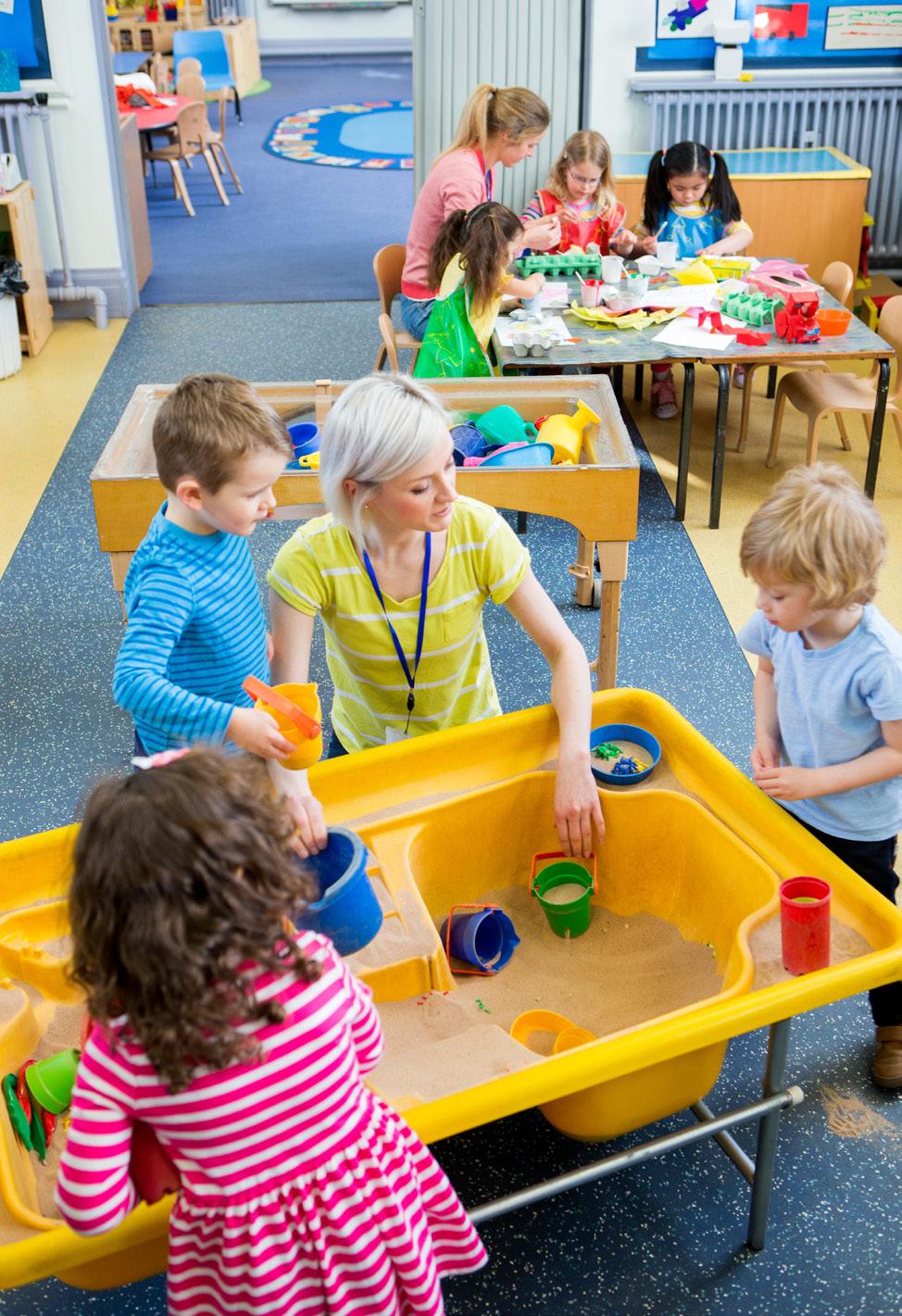
The government’s flagship school-based nursery programme – a key part of Labour’s “Plan for Change”, aims to deliver high-quality, affordable childcare to parents so that every child can get the best start in life. Schools are well-placed for this ambition, offering trusted, familiar environments that support children’s development and make life easier for families. Through the School-Based Nursery Capital Grant, schools across England are helping to expand early years provision and strengthen the link between nursery and school life.
The first phase of the funding programme is already making a tangible difference. This year, 300 schools received grants to create up to 6,000 new nursery places, directly supporting the government’s wider childcare expansion plans. Building on this success, phase two is now underway, with a renewed focus on helping families in disadvantaged areas access early years education close to home. Until 11 December, primary schools can apply for E
F up to £150,000 to create or expand onsite nurseries. Maintained nursery schools are now eligible to apply for the first time.
School-based nurseries have proven particularly popular with parents. For families with children of different ages, having nursery and school provision on one site simplifies daily routines – one drop-off, one set of relationships, and a consistent approach to care and learning. Many parents also value the continuity that school-based nurseries provide, easing the transition into reception and beyond.
The benefits extend beyond convenience. Evidence shows that nurseries based in schools experience lower staff turnover, serve higher proportions of children with special educational needs and disabilities (SEND), and are often located in areas with greater levels of deprivation. Teachers frequently report that close collaboration between nursery and school staff enhances children’s readiness for school, creating smoother transitions and stronger relationships with families.
Thanks to the success of phase one, 189 new or expanded school-based nurseries opened their doors across England this September, creating over 4,000 additional childcare places for children.
Now, with £45 million allocated to phase two, at least 300 more school-based nurseries will open or expand, ready to welcome children in the 2026–27 academic year.
In the first wave of funding, the majority of nurseries were in the North and Midlands – including around one in ten in the North East. The next phase aims to build capacity in areas of need all over the country, especially in places that are disadvantaged.
Meeting community need
One school already seeing the benefits is Scargill Infant School in Essex, which used the SchoolBased Nursery Capital Grant to double its nursery capacity from 24 to 48 places for children aged two to four. Operating during term time, the nursery offers both 15- and 30-hour funded places and deliberately avoids charging for additional hours to keep access equitable for all families.

For Scargill, the decision to expand came from clear community need. Oversubscription and growing waiting lists demonstrated local demand, while feedback from parents and carers, alongside engagement with the local authority and early years networks, shaped the school’s plans. Having identified that children were joining reception from 28 different feeder nurseries, leaders recognised the value of providing a consistent early years experience on-site.
Setting up a nursery proved a learning curve. Despite limited prior experience with capital projects, the school benefited from guidance from its academy trust, local authority, the Department for Education, and its chief financial officer. Staffing was carefully planned, maintaining a 1:8 ratio and creating two new level-3-qualified posts, including a nursery manager. A strong EYFS lead bridged nursery and reception practice, leading to measurable improvements in attendance and outcomes.
Scargill advises other schools considering expansion to develop a clear model and stay true to it. A dedicated and skilled
Through the School-Based Nursery Capital Grant, schools across England are helping to expand early years provision and strengthen the link between nursery and school life
nursery team, robust financial planning, and meaningful community engagement are essential foundations. Building partnerships with local early years providers and local authorities has also proved invaluable.
The success of Scargill and hundreds of other schools demonstrates how the School-Based Nursery Capital Grant is unlocking opportunities for children and families while strengthening school communities. As phase two is in process, headteachers across the country have the chance to shape early education in their area. M
FURTHER INFORMATION
www.gov.uk

As rising levels of need place increasing pressure on the SEND system, educators, policymakers and practitioners came together at the Tes SEND Show 2025 to explore how schools can embed inclusion at every level, from early intervention and curriculum design to leadership and family engagement
Since the introduction of the Children and Families Act 2014, the number of children and young people identified with special educational needs and disabilities (SEND) has risen from 1.3 million to 1.7 million. In 2024/25, over 1.2 million children and young people were receiving SEN support, and nearly half a million had an EHC plan.
Rising levels of need and pressure on the system have also led to assessments being carried out later, often after a child’s needs have escalated.
As such, a new Education Committee report calls for a “root and branch” transformation of the way mainstream education caters to children with SEND.
To help schools and teachers navigate a complex issue, the Tes SEND Show 2025 gathered nearly 4,000 SENCOs, support staff, and school leaders to share best practice, explore new ideas, and celebrate excellence in SEND provision.
Held at the Business Design Centre in London on 10–11 October, this year’s programme was one of the most ambitious yet. It reflected the remarkable expertise and innovative practice taking place across schools and settings, often in the face of funding challenges and staffing pressures. It also captured a growing recognition across the sector that meaningful change is needed in how we operate. While systems, structures, and funding models remain central to effective SEND provision, there is a clear understanding that some approaches must evolve to meet the needs of today’s learners.
The Tes SEND Show aims to empower support staff, SENCOs, and education leaders to navigate this change with confidence, by
strengthening knowledge, sharing practical tools, offering fresh perspectives, and fostering meaningful connections that enhance outcomes for children and young people with SEND.
The exceptional content programme was developed in collaboration with the show’s esteemed Advisory Board, including practitioners, exhibitors, speakers, and DfE advisors who all share one common goal: improving the lives and outcomes of children and young people with SEND.

A thought-provoking keynote
The show opened with a powerful keynote from Tom Rees, chair of the DfE’s expert advisory group for inclusion and CEO of Ormiston Academies Trust, and Dame Christine Lenehan, SEND strategic advisor to the DfE.
They outlined their perspectives on the case for change, the vision for the future of the SEND system and the core principles for reform.
While they were not able to give concrete details on long-awaited SEND reforms, set to be announced in the upcoming white paper, they did outline what they had learnt in the past year.
Tom Rees said there is a growing consensus on some of the principles that should underpin upcoming SEND reforms. “The first is shifting away from viewing the SEND system as something separate,” Rees explained. “Instead, we should see it as a design principle built into the main education system – something that shapes the fundamental structures of schooling.”
He also emphasised the need to move from targeted support that often follows lengthy assessment processes or waits for diagnosis, towards earlier intervention and stronger inclusion within mainstream settings.
Rees added that a reformed system should avoid categorising pupils with SEND as E

We should shift away from viewing the SEND system as something separate. Instead, we should see it as a design principle built into the main education system – something that shapes the fundamental structures of schooling

F separate from their peers. “Much of what we currently classify under special educational needs is actually quite common and predictable,” he said. “We should ensure schools are equipped to respond to these needs in the usual, expected ways.”
Inclusion at the heart of each lesson
Their thought-provoking talk was followed a discussion from Dr Susie Nyman who explored how to place equality, diversity, inclusion, belonging and accessibility at the heart of every lesson. Introducing her innovative Accessibility Formula, Dr Nyman presented a framework designed to ensure curriculum content is accessible to all learners. Her approach emphasised equality and inclusion as the foundations of effective teaching. Through examples and practical insights, she demonstrated how accessible formats, assistive technology and inclusive design can transform classroom practice, helping every student feel seen, supported and valued.
Another key session came from Dr Tina Pagett, HMI and specialist adviser for SEND and alternative provision at Ofsted, who outlined upcoming changes to the inspection framework. Her session offered valuable clarity on how the new system will affect SEND and alternative provision settings. Delegates left with a better understanding of the direction of travel for education inspection and what to expect in the months ahead.
Daisy Russell, assistant director at the Council for Disabled Children and Ruth Piling, programme lead for education and equalities at the same organisation, led a session on the SEND Annual Review process. Their presentation offered an overview of the law and best practice for Annual Reviews.
The theme of inclusivity continued with Natasha Chalk, head of EK Outreach Services, who explored the importance of tailoring the curriculum to meet the diverse needs of


learners with SEND. Her seminar highlighted key principles for developing an inclusive curriculum that enables all students to access, engage with and succeed in their education. Natasha’s presentation combined strategic thinking with practical steps, giving delegates the tools and confidence to embed inclusivity throughout their teaching practice.
Rachel Wright, author, educator, and host of The Skies We’re Under podcast, brought powerful lived experience to her session called Bridging the Gap Between Families and Professionals. As the founder of Born at the Right Time Ltd, she drew on both research and personal insight to explore how to build stronger, more trusting relationships between schools and families. Her talk addressed the challenges that can arise from difficult conversations or mismatched expectations and offered constructive, compassionate ways to move forward.
The event also featured Alexandra Chiorando, education consultant and qualified teacher at Marmalade Early Years Consultancy, who presented on the role of sensory systems in learning environments. Her session delved into how sensory input through play and movement supports calm, focus and regulation, helping children develop key skills such as proprioception and vestibular control.
This year, as government plans to reform the SEND and Alternative Provision system in England, educators are turning to the TES SEND Show for the guidance, training, and resources they need to adapt and thrive.
Next year, the Tes SEND Show London takes place 9–10 October 2026 at the Business Design Centre, Islington. It also comes to Manchester on 13–14 March 2026 at Emirates Old Trafford – bringing the same energy, insight, and inspiration to colleagues across the North of England. M
FURTHER INFORMATION
www.tessendshow.co.uk
Introducing nasen Academy. A new professional learning platform offering flexible, high-quality CPD for the SEND workforce. Alongside a refreshed membership model, it marks a major step in making development more accessible and impactful

This autumn marks one of the most exciting developments in nasen’s history – the launch of nasen Academy, a brand-new platform set to redefine professional learning and development for everyone working across the SEND sector. Designed to meet the evolving needs of educators and professionals, nasen Academy offers high-quality, on-demand CPD that can be accessed anytime, anywhere. Its flexible learning pathways, reflective questionnaires, and built-in progress tracking empower users to take control of their professional growth, ensuring that every course not only enhances knowledge but strengthens everyday practice. Whether you’re just beginning your SEND journey or advancing your expertise, nasen Academy provides the tools to support you every step of the way.
Launching alongside nasen Academy is a new, tiered membership model, developed to give individuals even greater flexibility, access, and value. Members will benefit from enhanced SEND resources, exclusive CPD opportunities, and improved collaboration tools, all designed to foster meaningful change and better outcomes for children and young people with SEND.
Free Core membership remains central to nasen’s offer, giving individuals access to essential materials such as quarterly
updates, twilight talks, and the Universal SEND Services by Whole School SEND. For those looking to expand their learning, Plus membership opens the door to even more professional development opportunities and additional sector-leading benefits to support long-term career progression.
Together, the new membership and nasen Academy mark an important step forward, reflecting nasen’s ongoing commitment to making professional development more accessible, inclusive, and impactful for all.
The new membership and nasen Academy will launch this autumn term. M
To register your interest, receive exclusive previews, and be among the first to explore nasen Academy, visit nasen.org.uk/big-reveal


As the UK rolls out new digital standards for schools, millions of pupils still face barriers to learning caused by digital poverty. Elizabeth Anderson, CEO of the Digital Poverty Alliance, argues that without equal access to devices, connectivity and digital skills, too many young people will remain excluded
In the UK, up to 19 million people currently experience some form of digital poverty. This widespread inequality affects students’ ability to learn, communicate and participate in modern society. Without access to devices, connectivity or digital skills, too many young people are being locked out of opportunities that should be universal. With the UK government announcing new plans to roll out future-facing digital standards across schools, steps are being taken around connectivity and cybersecurity to bolster digital infrastructure. However, much needed is greater access to devices, and a range of digital skills. Our research shows that digitally excluded children lack basic skills – with 40 per cent in one DPA study being unable to use a well known search
engine. Beyond this, critical thinking, AI and algorithmic literacy are all critical, too.
By ensuring every child has access to quality technology, the UK could invest in a generation equipped to lead, innovate and thrive. In an era where the digital landscape shapes our daily lives, schools must be empowered through clear standards that are adhered to, to harness these tools effectively. These standards are essential to ensure digital education is not fragmented, but consistent and transformative across the country.
By embedding these principles into the fabric of our education system and ensuring clear commitments from government, industry and schools, we can guarantee that every child regardless of background has the right tools to stay connected and succeed.
Connectivity – including broadband internet and wireless networks - is the backbone of modern education. Yet digital exclusion remains a persistent challenge across the UK education system. Nearly 570,000 young people lack both a learning device and reliable at home internet connection, leaving them unable to participate fully in remote or digital learning.
Teachers are witnessing the consequences firsthand, with 75 per cent of pupils reportedly falling behind due to limited access to technology. This divide is not just a technical issue, it’s a barrier to equity, opportunity and academic progress.
The UK government’s commitment to invest £45 million to boost school infrastructure, including upgrades to fibre and wireless networks, is a promising step to get classrooms online. By strengthening digital infrastructure, schools can deliver more interactive, inclusive and future-ready education.
Reliable connectivity empowers teachers to innovate, students to engage and for communities to thrive. To achieve this, schools must proactively work with local councils, charity programmes, community partners and national initiatives to ensure every student can get online.
Schools and education leaders play a critical role in identifying gaps and leveraging available resources to close them, whether through device donation schemes or connectivity support.

In an era where the digital landscape shapes our daily lives, schools must be empowered through clear standards that are adhered to, to harness these tools effectively
Device donation and redistribution schemes play a crucial role in supporting students from lower-income households who may lack personal devices essential for coursework and developing digital literacy skills, but there is no scheme that covers every part of the UK.
Research from the Nominet Digital Youth Index report for 2023, revealed that four per cent of young people across the UK, totalling two million individuals, lack access to learning devices like laptops or desk computers.
By expanding and scaling-up device donation and redistribution schemes such as Tech4Learning, schools can help bridge the digital divide while contributing to the government’s ambitions to build a more environmentally friendly and circular economy.
In some areas, programmes such as our Tech4Families initiative operate locally across different parts of the country, giving schools the opportunity to explore what’s available in their area and work with us to access devices. These schemes not only extend the life of existing technology but also ensure that students have equitable access to learning tools.
However, while it is vital that schools have the infrastructure and provisions in place to ensure all students can get online, they must avoid making the curriculum entirely dependent on digital access. True accessibility means offering flexible, inclusive learning pathways that accommodate varying levels of connectivity and device availability, together with the skills and confidence to use these safely.
Full participation, full potential Ensuring children not only have access to digital devices, but that they can engage confidently in inclusive and meaningful ways to learn, express themselves and collaborate is just as important. Access is the starting point, but true digital inclusion means enabling every child to participate fully, regardless of ability or background. E
F Accessible digital education means ensuring platforms, tools and content are compatible with assistive technologies such as screen readers, voice recognition software and alternative input devices. It also means designing learning environments that support diverse needs, such as offering adjustable text size, captioned videos and high contrast visuals. When digital systems are built with accessibility in mind, they empower students to engage independently and confidently.
Leading the charge to log everyone in Digital leadership is essential to bridging the digital divide and equipping the next generation with the skills they need to succeed. But this begins with teachers. Schools must prioritise building digital confidence and competence among educators, ensuring they have the right skills to embed technology into the classroom. Without this foundation, efforts to improve student literacy will fall short.
To achieve this, schools must adopt a dual focus on supporting teachers to deliver high-quality digital education and equipping students with the foundational skills to navigate a connected world. Digital literacy must be woven into the curriculum as a core competency.
With recent research revealing nearly a third (31 per cent) of teachers observing a lack of basic digital skills among their students, this raises critical concerns for future success in an increasingly digital job market.
With 90 per cent of UK jobs already requiring digital competencies and 60 per cent of employers expecting their reliance on advanced digital skills to grow within the next three years, digital upskilling is vital to ensure students can qualify for opportunities at every level.
Schools, trust and education policy makers must invest in targeted professional development, curriculum reform and inclusive digital strategies that empower educators to lead with confidence. When teachers are equipped with the right tools and training, they can confidently lead digital training, ensuring that students are both digitally skilled and safe online, but teachers often lack the time and opportunity to gain these skills.
Alongside the powerful opportunities for learning and connection that the internet offers, there is a broad range of harms that can arise from being online that have real

life consequences. From cyberbullying and online predators to exposure of inappropriate content, the risks are evolving, combined with the growing need to critically evaluate opinions stated as facts and fake news.
Schools have a critical responsibility to keep children safe online. It is essential for educators to embed digital education as a core element of the school curriculum, guiding students on the appropriate, effective and safe use of technology. Online safety education and development of critical thinking helps children and young people understand the potential risks they may encounter online and how to respond responsibly. By embedding digital literacy into everyday learning, schools empower students to navigate the online world with confidence and care, while building the resilience needed to thrive in a connected society.
Building digital resilience also means equipping children and young people with the skills to respond to online challenges. By investing in resilient systems and digital literacy, schools can protect their communities and ensure that technology enhances learning without compromising safety. Ultimately, digital inclusion is essential to equitable education. With hundreds of thousands of students lacking devices or internet access, the UK must invest in infrastructure, standards and support. M FURTHER INFORMATION
The Department for Education’s independent review of Oak National Academy recommends expanding the body’s remit, despite evidence of potential negative market impact. BESA warns the move could threaten the future of educational suppliers and erode teacher autonomy
The Department for Education recently published the findings of its independent review of its curriculum body, Oak National Academy. The review makes a number of significant recommendations which, in our view at BESA, could pose an existential threat to the educational suppliers’ market, particularly those developing curriculum resources and emerging artificial intelligence tools for educational use.
The review, which has been underway for much of the past year, was accompanied by a market impact assessment examining whether Oak has negatively affected the commercial market since its incorporation as the Department’s curriculum body in 2022. The assessment concluded that Oak was likely to have had a negative impact on the domestic market. While its impact on exports was found to be negligible, this was only because Oak has not yet marketed its products internationally.
These findings were not meaningfully reflected in the independent review’s recommendations. If accepted, they would in fact expand Oak’s remit and risk granting it an even greater competitive advantage over commercial suppliers.
Notably, the review has recommended that Oak should be aligned with the curriculum and assessment review to support the Department in embedding how it thinks the curriculum should be taught in schools. This would not only confer a significant commercial advantage, but also extend government influence into the delivery of teaching, an area that should remain the professional domain of teachers. As several teaching unions have
As some unions have noted, such steps could undermine teachers’ autonomy to deliver the curriculum
already noted, such steps could undermine teachers’ autonomy to deliver the curriculum in ways best suited to their pupils. Furthermore, the review even goes as far to suggest that Oak should begin to deliver CPD directly to teachers on how to use their sequences and resources. This would take Oak from being simply a resource bank to being the Government’s de-facto curriculum authority, instructing teachers not only what to deliver but how to deliver it.
For these reasons, BESA has taken the difficult decision to resume legal proceedings against the Department for Education. We also urge school leaders to consider carefully the wider implications of adopting Oak’s resources while these concerns remain unresolved. M
The government’s Curriculum and Assessment Review signals a bold step toward modernising education in England for a digital age. With commitments to embed digital literacy and rebalance computing, the challenge now is turning vision into reality, writes Nimmi Patel, associate director for policy at techUK
The publication of the Curriculum and Assessment Review, and the accompanying government response, marks a pivotal moment for education in England. It reflects a recognition that education must evolve to meet the demands of a changing world. As part of the review, techUK called for a curriculum that prepares young people for a future shaped by digital transformation, AI and rapid technological change and
we are pleased to see that many of our recommendations have been taken on board.
The government’s commitments to embed digital and media literacy into the curriculum, rebalance the Computing curriculum, and explore a new level 3 qualification in data science and AI are welcome steps forward. So too is acknowledgement that essential (otherwise known as ‘soft’) skills are critical to prepare young people for life and careers. These

changes reflect the reality that both digital and human skills are foundational to success.
Data from Three UK shows 85 per cent of parents view digital skills as equally important as reading and writing, but 44 per cent worry their child’s knowledge doesn’t go far beyond scrolling social media. The myth of pupils being “digital natives” must be challenged; under 19s are less likely to have basic digital skills than over 60s. Too many students are leaving school without the skills they need for life and work. These competencies need cultivating, not assuming.
Within the review, there is clear intent to tackle these issues, but the challenge now is turning vision into reality.
A fully digital curriculum, better integration of digital skills across subjects, and a refreshed approach to computing education all have the potential to transform learning, but only if they are carefully developed and schools are supported to deliver them. That will require sufficient investment in teacher training through organisations like the National Centre for Computing Education, ensuring continued


The government’s commitments to embed digital and media literacy into the curriculum, rebalance the Computing curriculum, and explore a new level 3 qualification in data science and AI are welcome steps
access to up-to-date resources, and tackling inequalities in digital access and engagement. The review rightly acknowledges that computing is taught inconsistently across schools, often due to a lack of specialist teachers and clarity in the curriculum. Addressing this must be a priority.
A broader, more inclusive digital education
Importantly, the review recognises that the computing curriculum could more effectively equip students with the digital knowledge and skills they need in their everyday lives. E

F From using AI tools critically, to applying digital technologies in creative and practical contexts, students need a broad and inclusive digital education. The replacement of the computer science GCSE with a broader GCSE in computing reflects this fact. This is especially important for engaging a wider range of learners, including underrepresented groups and girls, to view computing as something ‘for them’ and study the subject at GCSE and beyond. techUK’s survey found that only 34 per cent of parents in tech said they were somewhat confident in schools’ ability to encourage tech education for all genders, while 25 per cent said they were unconfident in their ability to do so.
Alongside digital skills, the review’s focus on oracy and communication, and government’s consideration of social-emotional learning and ‘subject-specific disciplinary skills’, is a welcome recognition of what employers know all too well: that human skills are essential in an AI-enabled world. Our survey of tech parents found that 70 per cent of parents believe schools neglect core (‘soft’) skills, while 68 per cent see a blend of soft and technical skills as key to preparing students for the future workforce. These core human capabilities – such as creativity, problem-solving and critical thinking – must be integrated throughout the curriculum, underpinned by a unified language that supports teachers and students to understand, teach and learn these fundamental competencies.
The revised curriculum is due to be published in 2027, with implementation from 2028. That gives us time, and a responsibility, to get this right. techUK stands ready to work with government to build a worldclass, digitally-enabled education system – one that equips every young person with the knowledge, skills and confidence to thrive in a fast-changing world. M
FURTHER INFORMATION
www.techuk.org


Join the ISBL National Conference 2025: “Unleashing Potential – Igniting Innovation”, where the power of operational excellence in education takes centre stage

Whether you’re an ISBL member or not, this event is designed for all school business, operations, financial, and digital leaders and professionals, from maintained schools, academies, academy trusts, Special Educational Needs and Disabilities (SEND) specialist schools, and groups of schools.
Over two exciting days, from 27 to 28 November 2025, at the Hilton Birmingham Metropole, immerse yourself in a vibrant atmosphere of community, collaboration, and celebration. Connect with 300 delegates and explore insights from 65 exhibitors and sponsors. Choose from 24 tailor-made workshops and seminars, plus 10 keynotes and panel sessions, featuring inspirational speakers as well as sector leaders and government department representatives.
Elevate your professional journey with our comprehensive continuing professional development (CPD) and expert advice across various developmental strands, including SEND, operational leadership and growth, AI, digital and data, procurement, marketing and communications, HR and people strategy, finance, sustainability and climate, and estate management. And enhance your experience with a spectacular gala dinner and CEO awards ceremony, celebrating the achievements and innovations within our community. Don’t miss this invaluable opportunity to network, learn, and propel your organisation forward.
In 2024: 85 per cent of delegates agreed that the conference met their expectations; over 60 per cent thought the networking opportunities were excellent; and 80 per cent of delegates said they would attend the conference again.
Delegates choosing the full conference experience are entitled to an all-access pass which allows for full entry to all keynote speeches and seminar sessions across each day of the event. Learn from industry leaders and gain insights that will drive your success. Delegates choosing the full conference experience also benefit from a comfortable solo stay where they can relax in a single occupancy room with bed and breakfast included, so you can recharge and start each day refreshed. They’ll also get exhibition access to explore cutting-edge solutions and connect with leading exhibitors showcasing the latest innovations. They’ll also enjoy daily refreshments, a two-course lunch served daily and a gala dinner where delegates can celebrate with a luxurious three-course meal and drinks; it will be an evening of dining, entertainment, and celebration. Delegates also benefit from exclusive networking events where they can build meaningful connections with fellow professionals through structured networking opportunities and informal gatherings. M
www.isbl.org.uk/events-conf-national2025



This article from the FIA explores the critical role of Passive Fire Protection, its integration with active systems, and the regulatory standards that shape its implementation
Fire safety in modern buildings depends on a balance between active and passive fire protection systems. While active systems such as sprinklers, alarms, and extinguishers respond once a fire starts, passive fire protection (PFP) is built into the structure itself, working silently to contain fire and smoke from the moment ignition occurs.
Understanding how PFP functions and why it must operate alongside active systems is key to safeguarding lives, property, and business continuity.
Passive fire protection refers to the permanent fire-resistant features integrated into a building’s design. These systems require no activation or human input; instead, they are designed to delay fire spread, limit smoke movement, and protect escape routes.
A central principle of PFP is compartmentation dividing a building into fire-resistant zones. By containing fire within one area, compartmentation slows its progress, protects occupants, and makes firefighting safer and

more effective. Limiting smoke movement is equally vital, as smoke inhalation remains one of the leading causes of fire-related fatalities.
Fire doors are engineered to resist flames, smoke, and heat for a defined period typically 30, 60, or 120 minutes. When closed, they act as fire barriers; when open, they provide evacuation routes or access for emergency crews.
These doors differ from standard ones in weight, thickness, and construction, often incorporating fire-rated hinges, selfclosing mechanisms, and smoke seals. The seals, usually brush, or intumescent types prevent toxic gases from leaking through gaps. Proper fitting is crucial to ensure they do not obstruct door closure.
Fire curtains meanwhile are deployable barriers designed to contain fire and smoke which are used in open-plan areas such as theatres, shopping centres, and offices. They can operate automatically or manually, providing additional time for evacuation and firefighting. Although they move, their
Fire curtains are deployable barriers designed to contain fire and smoke
role in containment aligns them closely with passive protection principles.
Fire walls are structural barriers, often constructed from reinforced concrete or masonry, that extend from foundation to roof. Their non-combustible composition allows them to resist fire for several hours, stopping flames and heat from spreading between sections of a building or adjacent properties.
Intumescent coatings are specialised coatings that protect load-bearing steel structures. When exposed to high temperatures, they expand to form an insulating layer that slows heat transfer, helping to preserve the building’s structural integrity and delay collapse.
The main difference between passive and active fire protection lies in their mode of operation. Passive systems are preventive, built into the structure and continuously provide protection without activation. Active systems are reactive triggered by heat, smoke, or manual action to detect, alert, or extinguish fires. E


F Both are vital. Passive systems buy time by containing the fire, while active systems use that time to suppress it. Increasingly, new technologies blur the line between the two, but their interdependence remains clear: neither can function as a complete solution alone.
Establishing a robust PFP strategy begins with a comprehensive fire risk assessment. This identifies hazards, evaluates how a
Establishing a robust
Fire Protection strategy begins with a comprehensive fire
building is used, and highlights where passive systems are most needed.
A typical plan should: divide the building into fire-resistant compartments; use approved fire-resistant materials; protect the structural framework; and install barriers to restrict fire and smoke spread
Attention to detail is essential. Even small gaps around pipes, ducts, cables, and electrical outlets can allow fire and smoke to pass through walls or floors. Specialist sealing materials should be used to maintain compartment integrity.
Good ventilation also plays a role, helping to clear dangerous gases and maintain safe escape routes. All PFP installations should be carried out by qualified professionals, with detailed records maintained for audits and compliance. Regular inspection and maintenance are not optional, they are legal and practical necessities to ensure systems perform as designed.
Integrating PFP systems into existing structures can be complex and expensive. Many older

buildings were constructed before modern fire safety standards, requiring structural modifications to accommodate fire-resistant materials or compartmentation barriers.
Ongoing maintenance and testing is another challenge. PFP elements can degrade over time due to wear, building movement, or accidental damage. Without routine inspections, a system may fail when most needed. Installation of other services may cause damage to the fire resisting elements of the building. Controlling and monitoring of such works is important to ensure that the PFP systems has not been compromised. Establishing a planned maintenance schedule ensures early detection of issues and compliance with regulations.
Staying on top of evolving regulations is another potential challenge. Fire safety legislation is constantly evolving. The Building Safety Act 2022 and updates to the Building Regulations 2010 have reinforced the importance of competence, record-keeping, and product certification. Staying compliant requires ongoing attention and investment, particularly for complex or high-rise buildings. Another barrier can be cost and resource constraints. High-quality fire-resistant materials and professional installation can be costly. However, the financial and reputational impact of inadequate fire protection is far greater. Cutting corners compromises safety and may expose building owners to legal liability.

The final potential challenge is regulatory standards and compliance. In the UK, passive fire protection systems must comply with the Building Regulations 2010, particularly Approved Document B (Fire Safety), which governs compartmentation, escape routes, and fire resistance.
Materials and systems should meet British Standards such as: BS 476: Part 20–24:1987 –Fire resistance tests for building elements; BS EN 13501 – Fire classification of construction products and building elements; BS EN 1363-1:2020 – Fire resistance testing for construction products; and BS EN 16341:2014 – Testing for fire doors and shutters.
Ensuring compliance not only protects occupants but also supports insurance coverage and legal defensibility. Documentation such as fire stopping certificates, installation records, and inspection logs forms part of the Golden Thread of information required under the Building Safety Act.
Neither active nor passive fire protection can function effectively in isolation. Passive systems contain the fire, while active systems detect and suppress it. Together, they provide a layered defence strategy that protects life safety, preserves property, and enables business continuity after an incident.
For designers, facilities managers, and responsible persons, the goal should always be integration, ensuring that both systems complement one another through coordinated design, installation, and maintenance.
Passive fire protection forms the structural backbone of building fire safety. Through fire-resistant walls, doors, coatings, and compartmentation, it restricts fire and smoke spread, maintains structural stability, and preserves vital escape routes.
When combined with active systems such as alarms and sprinklers, PFP enables a comprehensive approach that not only meets regulatory requirements but also saves lives and limits damage.
In the words of many fire safety professionals: active systems fight fire, passive systems buy time. Both are indispensable, and together they define the resilience of the built environment. M


When was the last time you had your passive fire protection system surveyed?






How much do you know about your passive fire protection system & how do you know it is compliant?

Evolu�on carries out projects from ini�al survey right through to fi�ng and comple�on. We can help you to beter your Passive fire protec�on system that is essen�al for safety, awareness and saving lives.




Fire doors are designed to stop the progress of fire and smoke, thus supporting both escaping occupants and fire-fighting activities. These are an important part of a building’s passive fire protection system

Here at Evolution, we specialise in Passive fire protection, fire door surveying with a comprehensive report service, fire door manufacturing, as well as the fitting on site.
Our service within the passive fire protection industry is second none from initial manufacture, surveying & project managing, door installation through to implementation of fire stopping. Quality processes and products are provided throughout.
“Our aim is to better fire protection in public sectors, preventing devastation and essentially saving lives. The prime purpose for fire doors and compartmentation is to stop the progress of fire and smoke, thus supporting both escaping occupants and fire-fighting activities. These are an important part of a building’s passive fire protection system and an essential requirement for the vast majority of premises including residential, public buildings, offices, schools and factories.”
Did you know there have been 47 UK Primary and Secondary school buildings destroyed by fires in the last five years; 2,300 school blazes were recorded in this five-year period. This is why passive fire protection systems are so important within schools and academies, without these lives can and will be lost.
Our manufacturing base allows us to supply single and multiple fire doors to suit your specifications. All products are certified providing 30 & 60-minute fire protection. The Pilkington glazing used in our doors and screens is the UK’s most versatile and reliable suit of fire-resistant glazing, tried tested and trusted within the fire
protection industry. To complete your door set we have a wide range of ironmongery choices from one of our partners. Product design and finishing can be discussed upon consultation, we have a range of existing designs however bespoke designing can be considered.
Our affiliation with PFC Technical Services Ltd allows us to provide extensive expertise on the passive fire protection elements for timber floor constructions, as well as stud partitioning. All PFCTS Fire protection systems are supported with UKAS accredited test data, independently tested by BRE Global. Both systems meet the current regulations of Document B for both integrity and insulation providing a minimum of one hour fire protection. We also provide a maintenance service as it is now mandatory that fire doors are checked every six months. This regulation has seen us invest in a new form of tracking through interactive doors pins. M
FURTHER INFORMATION
www.evolution-bs.co.uk
Office: 01366 385603
General enquiries: info@evolution-bs.co.uk
Accounts: accounts@evolution-bs.co.uk









As schools become increasingly digital, their exposure to cyber threats grows. But with the right governance, culture and use of free resources, schools can significantly strengthen their cyber defences. Gareth Jelley, cyber security lead at edtech charity LGfL – The National Grid for Learning, explains how
Schools face a wide range of cyber risks due to several compounding factors. They present an unusually large and complex digital footprint – with hundreds or even thousands of students and devices accessing networks daily. Other factors include limited investment in IT, a lack of specialist cyber security expertise, inconsistent staff training, and underdeveloped cyber security governance.
Unlike corporate environments, schools constantly onboard new users and devices, making it harder to secure systems. Senior leaders, already stretched with responsibilities for safeguarding, academic performance and wellbeing, may unintentionally overlook cyber risks.
Outdated systems further increase exposure. For example, devices running Windows 10
stopped receiving security updates in October 2025. Many schools now face a difficult choice: decommission devices and risk disrupting learning, or keep using unsupported systems and hope to avoid a breach.
What sorts of data are at risk?
Schools hold large volumes of sensitive data on pupils, parents and staff. This includes personal details, contact information, school records, medical notes, and safeguarding reports. A data breach could have serious consequences for both individuals and institutions - ranging from reputational damage to legal and even life-threatening implications. A recent report from the Information Commissioner’s Office (ICO) found that over half of insider cyber incidents in schools are E


F caused by students. In some cases, students have accessed management systems to view, alter or delete data. These systems often store highly sensitive information, including pastoral records, medical details, and staff notes.
What can schools do to improve their cyber security?
The good news is that just as there are many factors that increase risk, there are also many actions schools can take to protect themselves. A strong starting point is governance. Clear oversight ensures that cyber security becomes part of leadership conversations. Schools should review frameworks like the Department for Education’s Cyber Security Standards and the Government’s Cyber Essentials scheme. LGfL has also developed a free self-led Cyber Security Audit Template to help schools benchmark their current practices against national guidance. Once risks are assessed and a plan is in place, schools can better prioritise actions and allocate budgets accordingly.
Creating a culture of cyber awareness is just as critical. High-profile attacks often hit the headlines, but without making these real and relatable to staff and students, they risk being ignored. Schools should treat cyber security with the same seriousness as safeguarding or health and safety – ensuring everyone feels responsible for keeping systems secure.
Simple habits, like locking unattended devices or using password managers instead of sticky notes, can make a big difference. Many reported breaches could have been avoided through such basic measures.
On the technical side, identity management is essential. Schools should enforce strong password policies, implement secure authentication methods, and segment access within networks – for example, ensuring only finance staff can access financial data. Multifactor authentication (MFA) is available in most cloud platforms but is still underused in schools. When supported by a positive culture, uptake becomes much easier.
What free tools and resources are available for schools?
There is a wealth of free support available to schools looking to improve their cyber resilience. The National Cyber Security Centre (NCSC), for example, offers a comprehensive education section, including governor question banks, free training resources for staff and students aged 11–17, and practical guidance drawn from small and medium-sized business contexts, which are often relevant to schools.
The NCSC also runs a free Early Warning Service. Once registered, schools receive alerts if vulnerabilities are detected in their websites, email, or public systemsalong with clear steps to resolve issues.
To help leadership teams prepare for potential incidents, NCSC offers Exercise in a Box - a set of tabletop scenarios that simulate cyber attacks. These exercises are invaluable for stress-testing response plans.
The DfE Cyber Security Standards provide a clear and realistic benchmark for schools. They outline what schools should be aiming for and form a solid foundation for improvement.

To support these standards, LGfL has developed a suite of templates and resources, including a free self-led audit that maps directly to the DfE’s recommendations. These tools help schools assess where they stand and what actions to take next.
The Cyber Essentials certification, developed by NCSC, outlines five key technical controls that defend against the most common cyber threats. While certification may be challenging for some schools, working towards it helps embed best practices and raises awareness across staff.
Police Cyber Alarm is another free tool, designed to monitor traffic to and from a school’s internet connection. It alerts schools to potential intrusions, such as attempts to steal data or remotely control malware. The system also monitors firewalls for known vulnerabilities and provides actionable reports.
LGfL’s Security School Report offers a more in-depth review of a school’s digital presence. It goes beyond the Early Warning Service by including detection of credential breaches linked to staff or students and alerts about school data being shared or sold on the dark web. It also includes evidence of malicious online activity targeting the school.
Each report includes clear instructions on how to remediate the issues found, helping schools take action quickly and confidently.
One area that often gets overlooked is the school’s backup strategy. Inadequate backups
Schools should treat cyber security with the same seriousness as safeguarding or health and safety – ensuring everyone feels responsible for keeping systems secure
can significantly amplify the impact of a cyber attack.
The NCSC recommends the 3-2-1 approach: three copies of your data, on two different types of storage, with one copy kept offsite. Yet many schools either don’t follow this model or fail to test their backups regularly.
There have been multiple incidents where schools had backups in place - but couldn’t restore them when needed. Ensuring critical data like the Single Central Record (SCR) is backed up and recoverable can mean the difference between a minor inconvenience and a full school closure. Testing and monitoring backup systems should be part of every school’s cyber strategy - not just to meet compliance standards, but to ensure continuity of education and safety in the event of a breach. L
DfE Cyber Security Standards (schools and colleges)
Government’s Cyber Essentials scheme
NCSC general school guidance and resources (See ‘Schools and Education’ section)
NCSC “Cybersprinters” (7 11 years)
NCSC “CyberFirst Navigators” (11 14 years)
LGfL Security School Report
LGfL Elevate Cyber Security Toolkit
Police CyberAlarm
LGfL Cyber Security Guidance, Training and Support

As concerns grow over childhood obesity, ultra-processed diets and poor nutrition, schools are increasingly seen as key to improving children’s health. Initiatives to improve school meals – from boosting fruit and vegetable portions to reducing processed foods – are reshaping what’s on the school menu

Across the UK, the question of what children eat at school has become more important than ever. With rising rates of childhood obesity, poor diets and growing concern about the impact of ultra-processed foods, the quality of school meals is now recognised as a key factor in shaping both health and learning. Nutritious, balanced meals at school can help children concentrate, support physical development and lay the foundations for lifelong healthy habits – yet evidence shows that many young people are still not getting the food they need.
On average, children consume too much sugar and too few fruits, vegetables, and wholegrains. This imbalance contributes to a range of health issues, including obesity, diabetes and poor mental wellbeing. Schools, which provide millions of meals each day, are seen as a critical place to make change happen.

The Welsh Government has recently consulted on new proposals to update school food regulations for the first time in over a decade
In Wales, one in four reception-aged children are classed as overweight or obese – a statistic that has sparked urgent calls for reform to school meal regulations in Wales. The Welsh Government has recently consulted on new proposals to update school food regulations for the first time in over a decade. These plans aim to increase the amount of fruit and vegetables on menus, limit sugary desserts and fried foods, and ensure that all school meals meet modern dietary standards. The initiative forms part of a broader “Healthy Weight: Healthy Wales” strategy, which seeks to make the healthy choice the easy choice for children and families.
At the same time, leading nutrition experts are calling for stronger action across the UK to reduce the presence of ultra-processed foods (UPFs) in schools. Professor Tim Spector, speaking at a House of Lords inquiry into diet, health and obesity last year recommended that no more than 10 per cent of food served in publicly funded institutions should be ultraprocessed – a dramatic shift from current estimates showing that UPFs make up around 61 per cent of the energy intake from primary school meals. He warned that children need “real food” rather than industrially processed
alternatives that disrupt healthy eating behaviours and fuel poor health outcomes.
The Soil Association has also urged governments to adopt a “whole school approach” to food, combining healthy menus with cooking lessons, farm visits, and hands-on food education.
Public opinion is increasingly on the side of change. A recent YouGov survey commissioned by ProVeg UK found that nearly half of UK parents with children aged 3 to 18 support increasing plant-based meals in schools. Eighty-five percent said they want schools to do more to teach children about healthy eating.
Since 2018, ProVeg’s School Plates programme has already helped swap over 50 million meals in 12,000 schools to healthier, plant-based or meat-free options, showing how quickly progress can be made when schools and caterers work together.
Moving towards less processed, more plant-based school food has benefits that go beyond the lunch tray. It supports children’s health, helps reduce carbon emissions, and encourages food literacy – giving pupils the knowledge and curiosity to make informed choices about what they eat.
As schools, parents, and governments rethink what’s on the menu, it’s time to reconnect children with real food and make sure that every meal served in school is helping to build a healthier generation. M
www.proveg.org/uk
In many secondary schools, single-use plastics are still seen as convenient because they cut down on washing up & speed up service. However, disposables drain school budgets, & both staff & pupils are increasingly aware of the environmental impact.
Find out how Harfield reusable tableware can help your school efficiently move away from single-use plastics.



Queen Anne High School in Dunfermline has trialled Harfield’s reusable tableware – and the results have been overwhelmingly positive

Harfield was approached by Shirley McKie, head of service, from Fife Council as she was looking to replace the single-use plastics used at Queen Anne High School in Dunfermline.
Fife Council agreed to run a trial of Harfield’s reusable tableware, and the results have been overwhelmingly positive.
“We invested in clearly marked bins for students to return their reusable items, and the system is working really well,” said Shirley McKie. “We’ve made sure the signage is clear to prevent plates and bowls from being accidentally discarded.”
Linda Hume, from Queen Anne High School, shared her experience with the new tableware:
“We’ve been using Harfield’s Soup Plates for our main meals, the Platters and Oval Dishes for paninis and baked potatoes and the

MultiPots for pasta. For smaller servings and desserts, we’ve used the MultiDish and Sweet Dish. They’ve been fantastic. Not only are they reusable, but they’re also manufactured in the UK, which is another important step forward in our sustainability efforts.”
To help ensure the success of the new system, Harfield provided Fife Council with a custom-designed poster to display beside the disposal bins.
Initially, there were concerns that students might dispose of the reusable tableware along with food waste. However, by clearly communicating the environmental benefits and using visual reminders, students quickly adapted. Plates and bowls were returned to the designated bin for washing, while leftover food was correctly placed in the food waste bin. M
Contact us today to find out how we can help you: Tel: +44 (0)161 477 5678
Email: info@harfieldtableware.co.uk www.harfieldtableware.co.uk




For children with food allergies, school can be a place of anxiety rather than learning. Now, a pioneering education initiative from The Natasha Allergy Research Foundation is helping transform how education settings understand and manage food allergies so pupils feel empowered and protected
The growing number of children with diagnosed food allergies in schools means that food allergies are a significant issue in the classroom.
School should be a place where every child feels safe, confident and able to take part in all aspects of learning.
Yet with around two pupils in every UK classroom living with a diagnosed food allergy, that sense of security is not always guaranteed. Research shows around 20 per cent of foodallergic reactions and 30 per cent of first-time anaphylactic reactions occur in schools.
The challenges of keeping pupils with food allergies safe in school was recently dramatised in the BBC series Waterloo Road; a pupil with a severe dairy allergy experienced an anaphylactic reaction in the TV drama
after eating food containing the allergen. Developed in collaboration with The Natasha Allergy Research Foundation, the UK’s food allergy charity, the storyline highlights the real risks pupils with food allergies face and how quickly they can become life-threatening.
Yet recent data published in the journal Archives of Disease in Childhood revealed that less than half (44 per cent) of school-age children in England at risk of food anaphylaxis have been prescribed an adrenaline autoinjector (AAI), medication which can save a life in a food allergy emergency.
This is despite UK and European regulators recommending that at-risk pupils should always have access to two AAIs, as some reactions need more than one dose or a backup.
One in five teachers has never been taught how to administer an adrenaline auto-injector which could save a life in a food allergy emergency
A safeguarding must
Managing food allergies is now a key safeguarding priority for schools, which have a duty of care to protect pupils’ health and respond appropriately to emergencies. Government guidance also requires caterers to provide allergen information, work with parents, train staff to prevent crosscontamination, and ensure safe, inclusive meals, up-to-date healthcare plans, and clear procedures for allergic reactions.
Jan Parnell, director of education at The Natasha Allergy Research Foundation, says: “For leadership staff, food allergies bring a significant responsibility. Schools aren’t just places of learning they’re where children spend most of their waking hours. Ensuring allergy management and policies are handled properly is no longer just about health and safety; it’s about building confidence and wellbeing for pupils and parents alike.”
Despite this, food allergy awareness in schools is variable. Research carried out by the NASUWT teachers’ union in collaboration with Natasha’s Foundation revealed that while 95 per cent of teachers have pupils with food allergies in their schools, 67 per cent have never received any formal allergy-awareness training.
Sixty-nine per cent of schools do not have all the recommended safeguarding in place such as a policy, medication, and training, and nearly half do not hold their own life-saving adrenaline auto-injectors.
One in five teachers has never been taught how to administer an adrenaline auto-injector which could save a life in a food allergy emergency, and 60 per cent are unsure whether their school even has an allergy policy. These gaps have real consequences. It is estimated that around half a million school days are lost to allergies every year, according to the Allergy team Parent Survey (2024), while 80 per cent of parents of allergic children report feeling anxious about their child’s safety at school. Furthermore, while a legislation change in 2017 allows schools to obtain, without a

prescription, ‘spare’ AAI devices for use in emergencies – when the pupil’s own AAI is not readily available or they haven’t been prescribed one – only around half of schools have done this, possibly because of the prohibitive cost, which often exceeds £100 a device, when the subsidised NHS tariff is around £10 for two devices.
An education programme to help
To help schools become more food allergy aware, Natasha’s Foundation has launched a new £1million educational programme called Allergy School. This pioneering national initiative is designed to transform how early years, nurseries, primary and secondary schools, and out-of-school settings understand and manage food allergies, so pupils feel empowered, included, and protected. Resources for primary schools have been developed with The King’s Foundation, St John Ambulance, the education charity Coram Life Education, and Tesco Stronger Starts, providing a comprehensive suite of free, practical materials. This includes five films for pupils and teachers – featuring Arlo the Armadillo, a puppet with food allergies – as well as quizzes, first-aid advice, lesson plans, assembly packs, a self-assessment tool to help schools gauge how food allergy inclusive they are, and City & Guilds accredited allergy training for teachers. E

F Since the launch in February 2025, more than 10,000 teachers and school staff have engaged with Allergy School or completed its training. The programme has now been extended to early years and secondary schools, offering a free self-assessment and best practice guidance to help these settings strengthen policies and safeguards, to better empower, protect and include students in their care.
There is also online certified allergy and anaphylaxis training for school staff, and a short film for secondary staff and students showing how to respond in a food allergy emergency. Together, these create a resource framework to build upon, and the charity is actively consulting students, teachers, and early years staff to understand what additional tools and information they need to support children with food allergies.
Allergy School is also partnering with the youth-led i-MATTER programme to explore the social and emotional impact of food allergies on young people, from anxiety and exclusion to bullying, and is co-creating new resources with students and educators that promote empathy, confidence, and understanding.
Allergy School’s primary and secondary school resources are mapped to the National
Curriculum to make them easy to use, and the early years materials are aligned with the new Eary Years and Foundation Stage statutory framework 2025. All are endorsed by the Department for Education. The aim is to raise awareness and education about food allergies, so that children with food allergies feel safe, empowered and included at school.
Tanya Ednan-Laperouse OBE founded Natasha’s Foundation with her husband Nadim after their daughter Natasha died aged 15 in 2016 from a severe allergic reaction to undeclared sesame seeds. Through medical research, policy change, and education, the Foundation’s mission is to create a safer world for people living with food allergies. Their campaigning led to the introduction of “Natasha’s Law” in 2021, transforming food labelling across the UK, and the Foundation now focuses on making schools safer through education.
Tanya said: “Our Allergy School programme has and continues to transform awareness and understanding of food allergies so that

all children are safe and able to participate fully in school life. When schools understand the realities of food allergies, they can help protect lives of every pupil.”
Educators and policymakers have welcomed Allergy School, with Stephen Morgan MP, former Minister for Early Years Education, stating: “The safety of our children, both in and out of school, is paramount. I welcome the important work of The Natasha Allergy Research Foundation and encourage all educational settings to make use of engaging programmes like this, alongside taking the necessary steps to manage allergy risks in line with government guidance.”
Allergy School resources have been designed with flexibility in mind so that every school can adopt it at its own pace. Early-years settings can access simple tools to help staff recognise allergic reactions, manage risk during meal or play times, and communicate effectively with parents. Secondary school resources focus more on empowering older pupils to take responsibility for their own allergy management, supported by well-trained staff and strong policies.
For leadership teams, Allergy School offers reassurance and practical support. Its self-assessment checklists, model policies and best-practice guides help schools meet national safeguarding and health obligations, while ensuring pupils with allergies are included in every aspect of school life. The programme also supports the preparation and review of individual healthcare plans, so that every allergic pupil’s needs are clearly understood and updated.
Jan Parnell adds: “We recognise that early years, nurseries, schools and out-ofschool settings are seeing more children with food allergies than ever before. There is still a lack of understanding about how serious food allergies can be. We want to end the challenges these children face so they can be fully involved in all school activities, and we urge all schools to use our free resources.” M
Free Allergy School resources are available at www.allergyschool.org.uk



This year, Stuart Canvas has expanded its product range with two exciting new additions, designed to enhance both safety and presentation across educational sports environments

Stuart Canvas helps schools and colleges across the UK protect and enhance their sports facilities with its industry-leading range of sports ground equipment. With over 50 years of British manufacturing experience, the company is trusted by schools, universities, and professional sports venues to deliver quality, durability, and performance.
This year, Stuart Canvas has expanded its product range with two exciting new additions: Professional Branded Windbreaks and Rugby Post Protectors, designed to enhance both safety and presentation across educational sports environments.
Built for performance and visual impact, Stuart Canvas’ Professional Branded Windbreaks are the perfect addition to tennis courts, MUGAs, and sports pitches. These robust, UV-stabilised mesh screens reduce wind interference and provide privacy while offering valuable branding opportunities. Schools can feature their crest, colours, or sponsor logos to create a strong identity and professional appearance at every event. Available in a range of colours and sizes, the windbreaks combine functionality with flair, transforming everyday sports areas into pride-filled playing environments.
“Schools are increasingly looking for ways to make their sports facilities stand out,” said Mike Pells, head of sports at Stuart Canvas. “Our branded windbreaks allow them to showcase their school spirit while improving conditions for players and spectators alike. They’re a great way to bring professionalism and pride to school sport.”
Safety and professionalism are at the heart of school sport, and Stuart Canvas’ Rugby Post Protectors deliver both.
Manufactured in the UK using highdensity foam and durable PVC covers, these protectors provide excellent impact absorption and weather resistance. Each set can be personalised with school branding or sponsor logos for a cohesive, professional finish on the pitch.
“The new Rugby Post Protectors are a fantastic addition for schools that take sport seriously,” added Mike Pells. “They not only ensure player safety but also give schools the opportunity to display their identity proudly on the field.”
Founded in 1971, Stuart Canvas is the UK’s leading manufacturer of sports ground equipment, industrial covers, and bespoke fabric solutions. Supplying schools, universities, and world-renowned venues such as Lord’s Cricket Ground and Wimbledon, the company is known for quality craftsmanship and innovation. M
For more information, visit: www.stuartcanvas.co.uk or email: sales@stuartcanvas.co.uk.
Born from lived experience, Sensory Playground provides affordable, trusted sensory resources that truly make a difference – supporting inclusive classrooms, reducing anxiety and helping every child thrive

Sensory Playground was born from lived experience. As a parent of children with additional needs, I know how challenging it can be to find resources that genuinely work. Too often families and schools spend valuable time and money on tools that don’t deliver. I founded Sensory Playground to change that – to make it easier for schools, nurseries, therapists and families to access high-quality, affordable sensory products they can trust.
Every item in our collection is carefully hand-picked, tested, and chosen for its realworld impact. From fidget tools that support focus, to calming aids that reduce anxiety, to sensory lighting that softens classrooms, our products are designed to meet a wide variety of needs. Whether supporting autism, ADHD, sensory processing differences, or pupils simply experiencing stress, each resource offers practical benefits in everyday settings. What sets Sensory Playground apart is our personal approach. We understand that no two children are alike and no two schools face exactly the same challenges. That’s why we’re more than a shop – we’re a partner. We regularly advise SENCOs, teachers and leaders on how to make the most of sensory provision, whether that means setting up a calming corner, refreshing equipment, or sourcing discreet tools for individual pupils.
Every product we stock is chosen because I know it works – either for my own children or for the families and schools we support
Affordability is central to our mission. With school budgets stretched, we know resources need to be accessible without compromising quality. Small, costeffective changes can make a huge difference – and our range is designed to prove that sensory support doesn’t need to be expensive to be effective.
Our vision is to make sensory provision a standard part of inclusive education, not an optional extra. Sensory tools can transform classrooms: reducing behavioural incidents, improving focus, and creating calmer, more supportive learning environments for every pupil. The benefits extend beyond SEND – helping all children build resilience and re-engage with learning.
At Sensory Playground, we believe inclusion starts with empathy but succeeds with practical solutions. By combining lived experience with professional understanding, we offer schools resources that genuinely work.
We’re proud to support education professionals across the UK, helping to create environments where every child can feel safe, valued and ready to learn. M

Play is vital to children’s wellbeing, learning and development – yet it’s increasingly being squeezed out of their daily lives. The Raising the Nation Play Commission’s final report, Everything to Play For, calls for a cultural shift to put play back at the heart of childhood and education. Baroness Anne Longfield CBE, executive chair of the Centre for Young Lives, shares the report’s recommendations
In June 2025, the Raising the Nation Play Commission – led and hosted by the Centre for Young Lives and chaired by the entrepreneur Paul Lindley – delivered its final report, “Everything to Play For”, following a year of evidence-gathering, visits, and speaking to children, parents, experts and professionals.
As our report made clear, play is one of the most powerful tools for boosting life chances for all children. Play is how children explore who they are, how they relate to others, and how they make sense of the world. It’s one of the purest forms of learning, joy, and connection, and boosts children’s wellbeing, confidence, and creativity.
Yet it is also being squeezed out of many children’s lives, at a time when many children are struggling with mental health problems,
with obesity, with development problems in their early years, and with school attendance.
It is tempting to assume that this is entirely due to the way smartphones, video games, and social media have become such a ubiquitous part of childhood. But games consoles and PCs have been around for years. What has changed is the increased prevalence of addictive apps and social media platforms colliding with a cultural change in how play is seen in wider society. This ranges from the “no ball games” signs in many public spaces, including many housing developments where children are growing up, to the ever-increasing number of cars on the roads, the rise in playground closures, and the increase in parental concerns about children’s safety. E



Sadly, we have also seen a very significant fall in playtime at school over the last 30 years. Children at Key Stage 1 enjoyed 23 minutes less breaktime a day on average in 2021 compared to their parents’ generation in 1995. The average total time dedicated to breaktime in a day fell by 18 minutes over the same period for Key Stage 2, and 17 minutes for Key Stage 3. Play time is even lower once the time it takes to queue for lunch and eat food is included.
This has happened at a time when there is overwhelming evidence showing how play is pivotal to children’s healthy development – their learning, health, cognitive and social skills – all of which help children thrive and be ready for school. Children learn more effectively through playful methods, especially outdoors or in flexible, interactive settings. Play-based learning can improve engagement, attendance, and teacher satisfaction - but is often not happening in schools due to insufficient teacher training and a rigid curriculum and accountability system.
Indeed, just 29 per cent of primary school teachers say they feel well or very well prepared to facilitate play after their initial training, a figure which falls further to 16 per cent for lower-secondary school teachers.
Playtimes which are physically active can also help children to concentrate better in the classroom. We spoke with children who talked about struggling to complete sedentary tasks for one to two hours at a time and that they found their movement breaks to be a welcome and necessary rest.
We have seen a very significant fall in playtime at school over the last 30 years. Children at Key Stage 1 enjoyed 23 minutes less breaktime a day on average in 2021 compared to their parents’ generation in 1995
Over the course of the school year, breaktimes account for up to 22 per cent of time spent in school, yet there is no requirement of schools to have dedicated staff or a strategy to maximise the benefits of the time that children spend in the playground.
During a visit to Finland, we met with representatives of the Ministry of Education and Culture, and the Finnish National Agency for Education. They described how play is a backbone throughout the school day, as it is during childhood more widely. Guidance in Finland recommends that children should have a 15-minute break for every 45 minutes of learning, with studies showing shorter lessons with more frequent breaks increase attentiveness.
In Denmark there is a flexible curriculum that enables more playful learning, fostering creativity, collaboration, and student ownership in learning. E

F We need the same cultural change here too, and our Commission makes a range of recommendations to boost play in pre-school environments and our education system. That includes school leaders, teachers, teaching assistants, after-school club staff, and supervisors receiving high-quality play training as part of their teacher training and CPD.
We also call for the DfE to require and support schools to develop their own plan for play, which includes trained play coordinators and a recognition of the importance of play within the curriculum.
Raising the status of early years practitioners is also essential to fully harnessing their potential for enabling play and encouraging parents to do the same. Working with young children is a highly skilled and impactful role, critical to their development and learning. This contribution should be recognised and elevated to the same professional standing as teachers. That means ensuring early years practitioners are equipped with the right skills and understanding when it comes to play. With the Government aiming to recruit 40,000 additional early years Practitioners by September 2025, the Education Development Trust stressed to us the importance of training that emphasises the value of play and the distinction between supporting and directing it. This is important when practitioners work closely with parents, helping to create “ripples of good practice” that reach far beyond the hours spent in a nursery or setting.
Play during school clubs
We argue experiences at breakfast and afterschool clubs in Primary Schools and in community settings such as holiday programmes should be predominantly play based. In schools, we also want to see the new National Curriculum include high-quality play-based indoor and outdoor learning in primary schools, as well as free play, and for it to set out how this benefits children, including after they reach school age. And we want to see primary schools move towards adopting ‘always-active uniforms’, in line with the calls from the Active Uniform Alliance. We also recommend primary schools have an annual ‘Day of Play’ during which learning takes place through free and guided play. We call for the DfE to issue statutory guidance to ringfence time within the school day for play during break time and lunchtime, so children have sufficient opportunities for free play, and suggest reinstating the 10 minutes to the school
day, as called for by the British Psychological Society’s Time to Play campaign. The DfE should also make clear that the withdrawal of playtime as punishment for bad behaviour or for running out of time to finish classwork is not acceptable. Ofsted should include play sufficiency as a measure of school performance to encourage schools to boost play in school time as a vehicle for learning and growth.
We need to empower parents and carers to support their children to play, so we recommend the DfE introduces an awareness campaign for parents on the importance of play and how to enable children’s play as part of its push to boost school readiness. We’ve seen during our visits to Scandinavia what’s possible when play is prioritised. Boosting play here in England needs political leadership, national investment, and a strategy to match. That’s why our core recommendation is for a new National Play Strategy, supported by a cross-departmental implementation taskforce led by the Secretaries of State for Culture, Media & Sport, and Education. We also call for a Minister with an explicit responsibility for Play. When Ed Balls launched the 2008 play strategy as Secretary of State for Children, Families, and Schools, he argued that fun and exciting opportunities to play are at the heart of a happy, healthy, and enjoyable childhood. That argument is as true now as it was back then. Now is the time for the government to send a clear signal to local government, schools, families and children: that play is a crucial part of its agenda to improve school readiness, to raise the healthiest and happiest generation of children, and to break down the barriers to opportunity. L
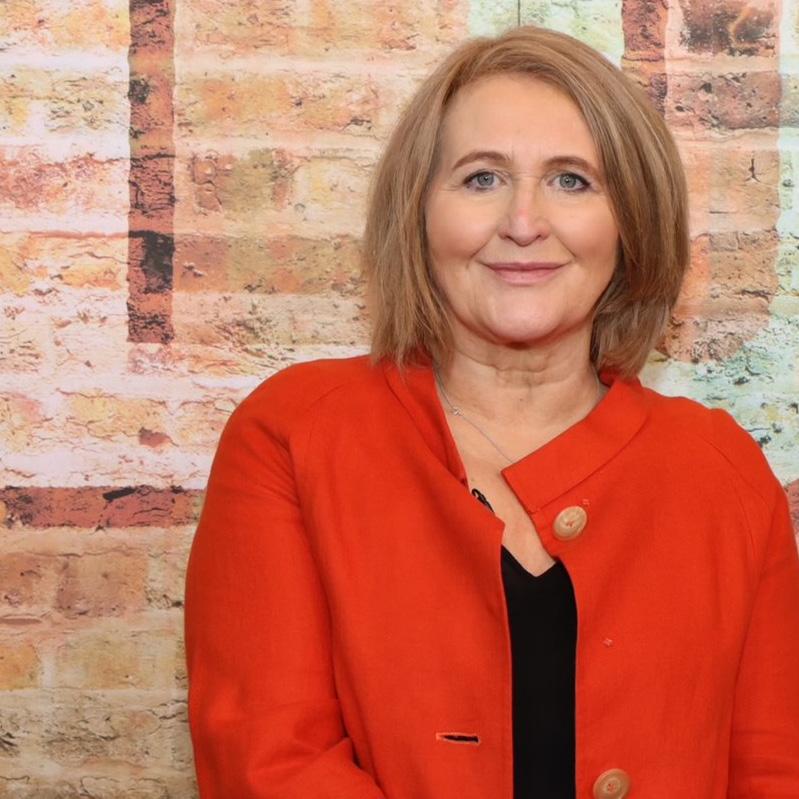

Mindful Mats from Action Mats are unique and simple. A Mindful Mats set is a resource that can help children focus in lessons, using movement based activities. Sixteen, one meter square mats, offer different challenges and different levels of dynamism. Action Mats resources are immersive and tech-free
Speed and simplicity are at the heart of Action Mats resources, and as some of the children that Mindful Mats are intended for often struggle with patience issues, a resource that can be quickly deployed and immediately engaged with, is particularly valuable.
Mindful Mats are not curriculum-based, rather they are a support resource for children and teachers alike. Disruption in the classroom is a problem reported by most teachers, and tools and strategies to help children focus, are in high demand as there is very little by way of tangible products that help in this area.
Often Mindful Mats are used by schools in a Sensory Circuit type configuration in the school hall before lessons begin. This arrangement is aimed at a particular cohort of children who have particular needs, and benefit from the deescalating effect that the progression through the different activity levels on each mat has. Parents can be involved in such sessions, making them a normal and fun activity for all rather than a ‘special needs’ session.
Let’s keep it moving
Movement is at the heart of all Action Mats resources and accessibility is key to inclusion. All resources feature simple graphics that enable children from anywhere in the world to understand the activities. Mindful Mats feature the same principles of simplicity and accessibility but with an emphasis on challenges that require focus to complete. The objective is to use the focus levels required to complete the challenges as a distraction.
The need for a resource like Mindful Mats, to help those with particular needs, or simply to give everyone a movementbased challenge, is seemingly worldwide.

The concept is understood by educators everywhere and the tools Mindful Mats provide are welcome everywhere too. The fact that there are purely simple graphics throughout, means their use can be adopted anywhere, without the need for translation.
Mindful Mats are made from 97 per cent recycled polyester.
A set of Mindful Mats is split between two tough vinyl bags to ensure teachers and children are not overloaded. The bags ensure Mindful Mats have a ‘home’ to encourage children to tidy them away. M
FURTHER INFORMATION
Discover the Mindful Mats range.
















If a school chooses to organise an overseas trip and make its own travel and accommodation arrangements – it may have to comply with package travel regulations. For schools, understanding these responsibilities – and knowing how to meet them – is vital, writes the School Travel Forum
Organising a school trip abroad can be one of the most rewarding parts of school life, for both pupils and teachers. From immersing students in new cultures and languages to developing resilience, independence, and curiosity, overseas visits have the power to transform classroom-based learning into real world experiences. However, alongside the excitement and educational value comes responsibility. If a school chooses to organise an overseas trip – to make its own arrangements regarding travel and accommodation – it isn’t just a travel experience, it can be a legally defined package. And with that comes a set of obligations under the Package Travel and Linked Travel Arrangements Regulations 2018 (PTRs).
For schools, understanding these responsibilities, and knowing how to meet them, is vital. The good news is that by choosing
a school travel provider that’s recognised by ABTA or ATOL, schools can not only benefit from exceptional learning experiences but also ensure full legal compliance, financial protection, and peace of mind for everyone involved in the trip.
The Package Travel Regulations (PTRs) were introduced to protect consumers booking package holidays, but they could also apply to some school trips and educational visits that include more than one travel element, for example, flights, accommodation and excursions, sold or arranged together for one total price.
If your school organises and sells such a trip directly to pupils or parents, the school could be regarded as acting as the ‘organiser’ under E
F PTR. This means the school carries the same responsibilities as a commercial tour operator. These responsibilities include providing comprehensive pre-departure information about the trip, including itinerary details, health and safety, and cancellation terms, and ensuring full financial protection in the event that travel arrangements cannot be fulfilled, for example, if a supplier (transport, accommodation or excursion venue) goes out of business.
The school will also take responsibility for being liable for the performance of all travel services in the package, even those delivered by third parties such as airlines, hotels or activity centres, as well as handling complaints and compensation claims, even if the issue arose from a supplier outside your control.
For a school, these obligations can present serious challenges. Most schools aren’t equipped to offer financial protection schemes, manage cross-border contracts, or absorb potential liability for issues such as flight cancellations or accommodation failures.
That’s where accredited school travel providers come in.
An accredited provider, one that is a member of School Travel Forum and/or holds
ABTA or ATOL membership, specialises in designing and managing educational trips that are fully compliant with the Package Travel Regulations. They take on the legal status of ‘organiser’, meaning the provider. not the school, carries the regulatory responsibilities and associated liabilities. Working with an accredited provider means the school can focus on students’ needs and the educational purpose and enrichment value of the visit, while the provider handles the complex legal, financial, and logistical aspects.
Accredited providers offer financial protection through ATOL, ABTA or equivalent bonding, ensuring all payments are protected, as well as 24-hour emergency support, so teachers have a trusted contact if anything goes wrong abroad.
They also offer comprehensive safety management systems, including vetted accommodation and activity suppliers, risk assessments, and health and safety guidance, helping schools meet their duty of care.
An accredited provider will also offer educational expertise, ensuring the trip supports curriculum outcomes and personal development goals.
Choosing a reputable provider gives schools the confidence that their trip is safe, compliant and professionally managed, without adding undue administrative burden to staff.

What happens if a school organises a trip independently?
In recent years, some schools have chosen to organise overseas trips directly - booking flights, accommodation, and excursions separately in an attempt to save costs. However, many don’t realise that by doing so, they may be inadvertently creating a ‘package’ under PTR and therefore taking on legal responsibility as the organiser.
In practical terms, this means the school must offer the same level of financial protection as a bonded tour operator and the school is liable for the entire trip, including the actions of suppliers abroad. If a trip is cancelled, or if a supplier fails to deliver, parents may have a legal right to claim compensation from the school, and ff an incident occurs overseas, the school may be drawn into complex legal or insurance issues.
This is not to say schools shouldn’t arrange trips independently, some do so successfully, but it’s important that leadership teams fully understand the legal implications and take appropriate measures.
The Department for Education’s guidance on Health and Safety on Educational Visits makes clear that schools should ensure any travel organiser used complies with the PTRs and that trips are fully financially protected.

Some schools choose to organise overseas trips directly – booking flights, accommodation and excursions separately in an attempt to save costs. However, many don’t realise that by doing so, they may be inadvertently creating a ‘package’ under PTR
In short, using a recognised school tour provider significantly reduces risk, workload, and uncertainty.
Several schemes exist to help schools identify reputable, compliant providers. One of the most widely recognised in the UK is the School Travel Forum (STF), whose members must meet rigorous standards for safety management, financial protection, and educational value. STF members are also awarded the Learning Outside the Classroom (LOtC) Quality Badge, which is endorsed by the Department for Education. The badge provides assurance that the provider has been independently inspected and meets high standards in both safety and learning quality.
When selecting a provider, school leaders should look for STF or LOtC accreditation, ABTA or ATOL protection (for air travel), and evidence of robust risk management and crisis procedures. They should also look for transparent pricing and contracts and positive testimonials from other schools.
These credentials provide objective reassurance that the provider operates to industry best practice and that the school’s responsibilities are fully covered.
One of the greatest pressures on teachers is time. Organising an overseas trip independently often means months of additional work - from collecting payments to managing bookings, risk assessments, and medical information. An accredited provider removes much of this burden. They handle every aspect from booking and administration to liaison with suppliers. They inspect local accommodation E

F providers to ensure facilities are appropriate for your group’s needs. They ensure all documentation is correct and compliant and that your monies are protected. They also provide support should an emergency arise. This releases teachers to focus on what matters most: the educational outcomes and pastoral care of their pupils. It also gives parents confidence that the trip is professionally managed and financially secure.
The impact of the pandemic significantly disrupted overseas school travel, but in recent years demand has returned stronger than ever. Schools are once again seeing the immense value of learning outside the classroom, not just in subject knowledge, but in social and emotional development. However, the pandemic highlighted how unpredictable the travel landscape can be. Working with recognised providers ensures that schools have robust refund policies, flexible booking options, and insurance protection in place.
Parents, too, are increasingly aware of the importance of financial protection. When a school can confidently state that its trip is fully bonded and compliant with the PTRs, it sends a powerful message of professionalism and care.
Turning compliance into confidence School trips abroad create memories that last a lifetime. They challenge pupils, broaden horizons, and bring learning to life in unforgettable ways. But delivering those experiences safely, legally, and sustainably requires more than enthusiasm, it requires partnership with professionals who understand the complexities of travel and regulation.
While the Package Travel Regulations may sound complex, their underlying purpose is simple: to protect travellers and ensure fair, transparent arrangements. For schools, compliance shouldn’t be seen as a hurdle but as a framework for safety, quality, and trust. By partnering with an accredited school travel provider, leadership teams can deliver safe, enriching overseas experiences while ensuring their school is protected from legal and financial exposure and provide reassurance to parents and governors. It also demonstrates best practice in governance and duty of care. In essence, using a recognised school travel provider enables the best possible experiences for pupils, supported by professional expertise and complete peace of mind. M
FURTHER INFORMATION
www.schooltravelforum.com







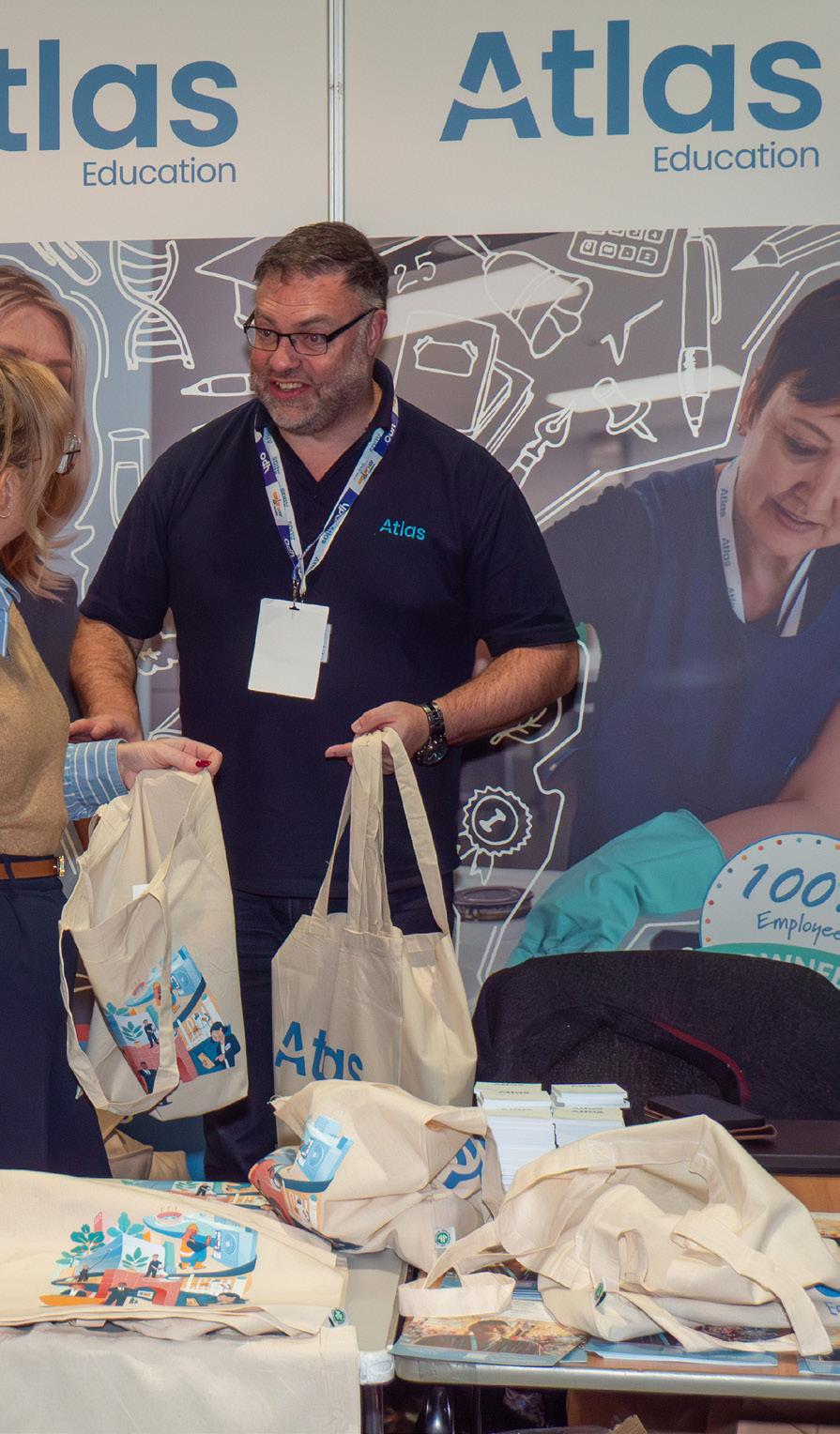

OLD BILLINGSGATE, LONDON
• Access the tools, technologies and strategies so your school or academy can thrive.
• Discover practical solutions from an inspirational line-up of educationalists and policymakers.





Schools lose thousands of pounds every year replacing lost, faulty and stolen equipment. Selectamark Security Systems helps protect and track your ICT equipment including PCs, laptops, tablets, iPads and projectors.

Asset and security labels uniquely identify assets and keep track of them within an organisation
Wide range of labels that come in various secure ratings
Can be personalised to your organisation with name, logo and sequential barcode

Forensic Property Marking Kits mark assets with a uniquely coded synthetic DNA solution
No annual licence fees and Police and insurance approved
Proven to reduce theft and burglaries by up to 83% and convict criminals

Industry leading, cloud-based solution to enable you to manage your fixed asset register
Identifies when crucial testing is needed
Assists with compliance of SFVS and complies with the DfE guidance on keeping an asset register Call us today and mention code ‘EDUCATIONTODAY10’ to get 10%
